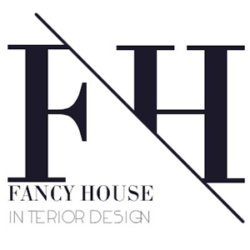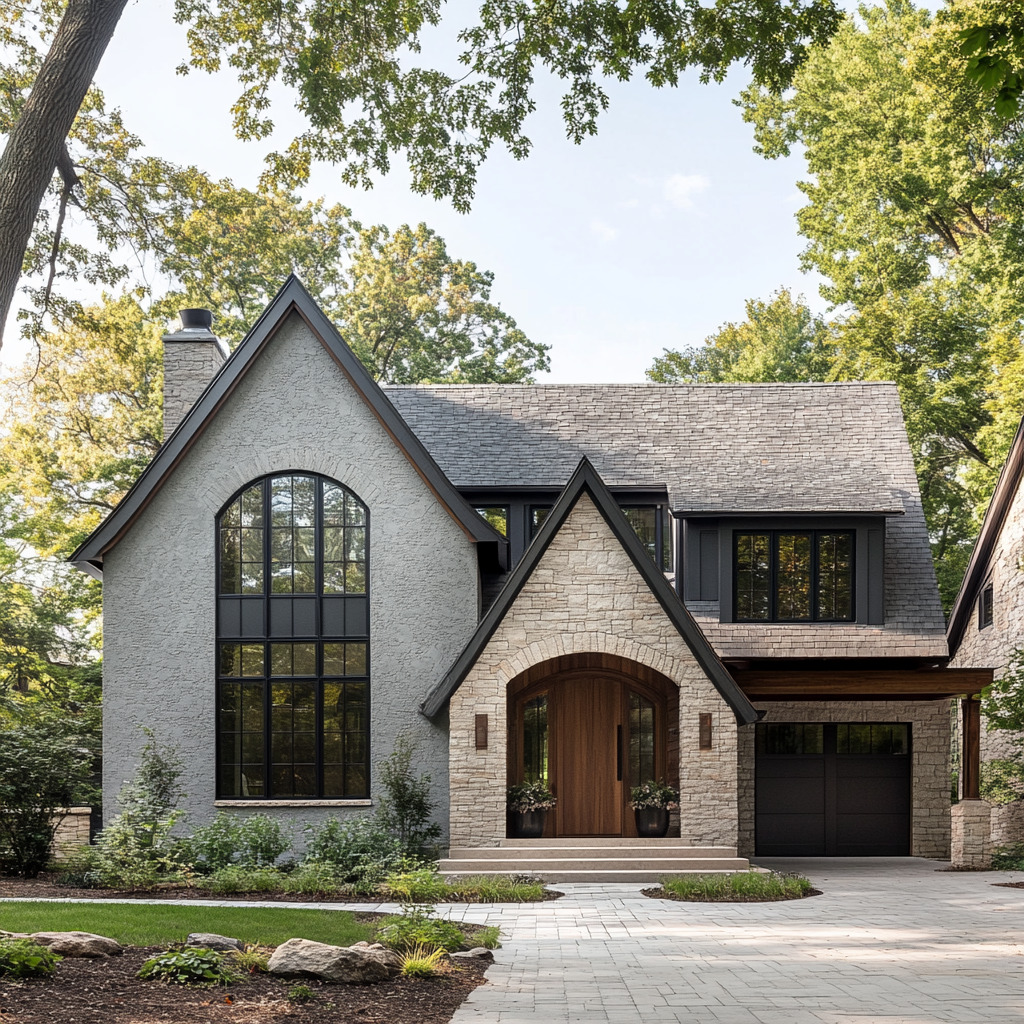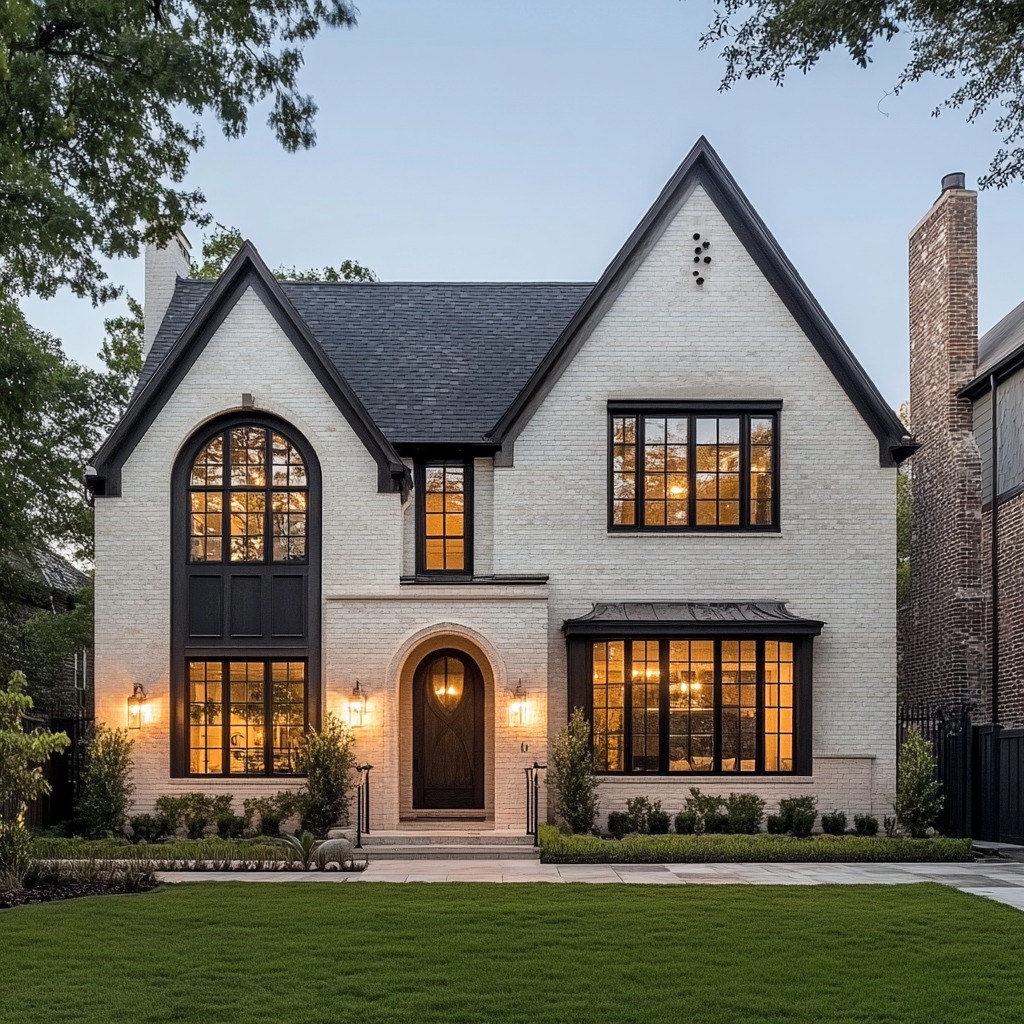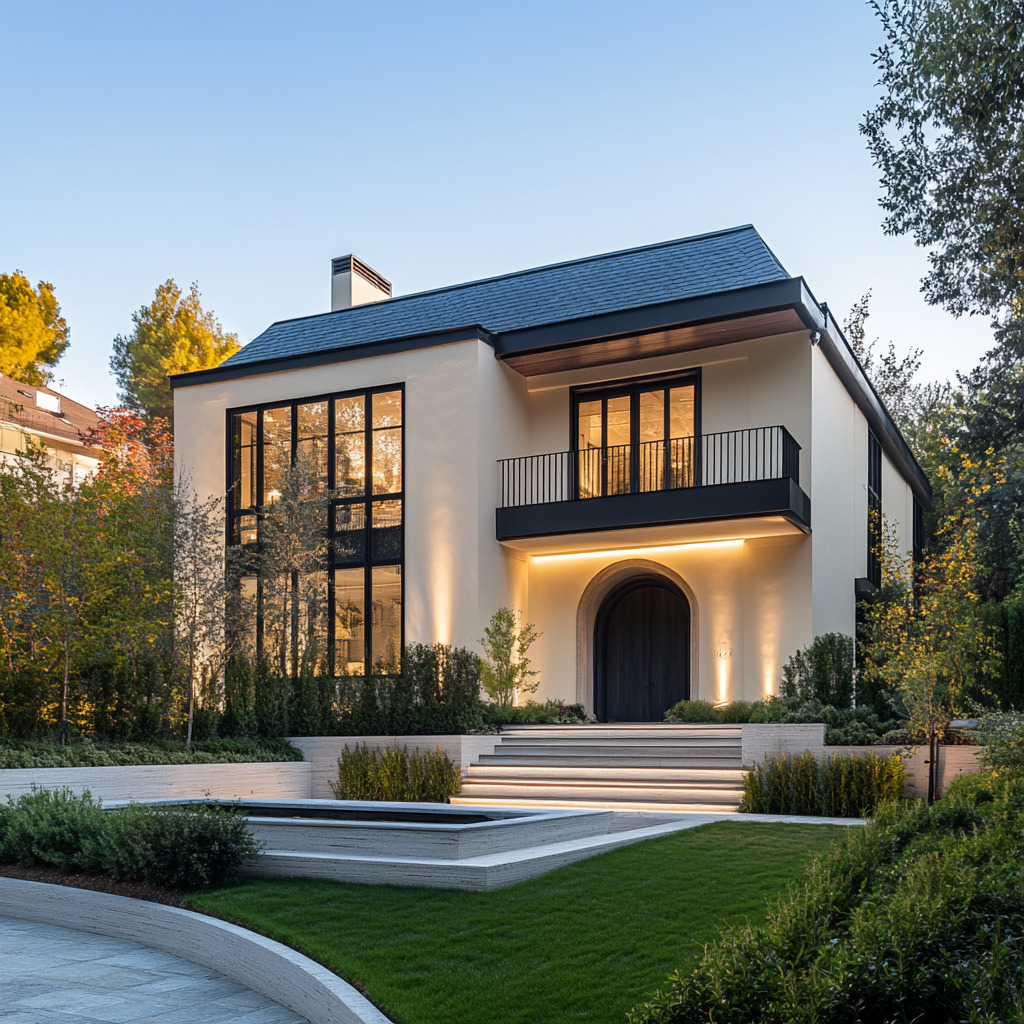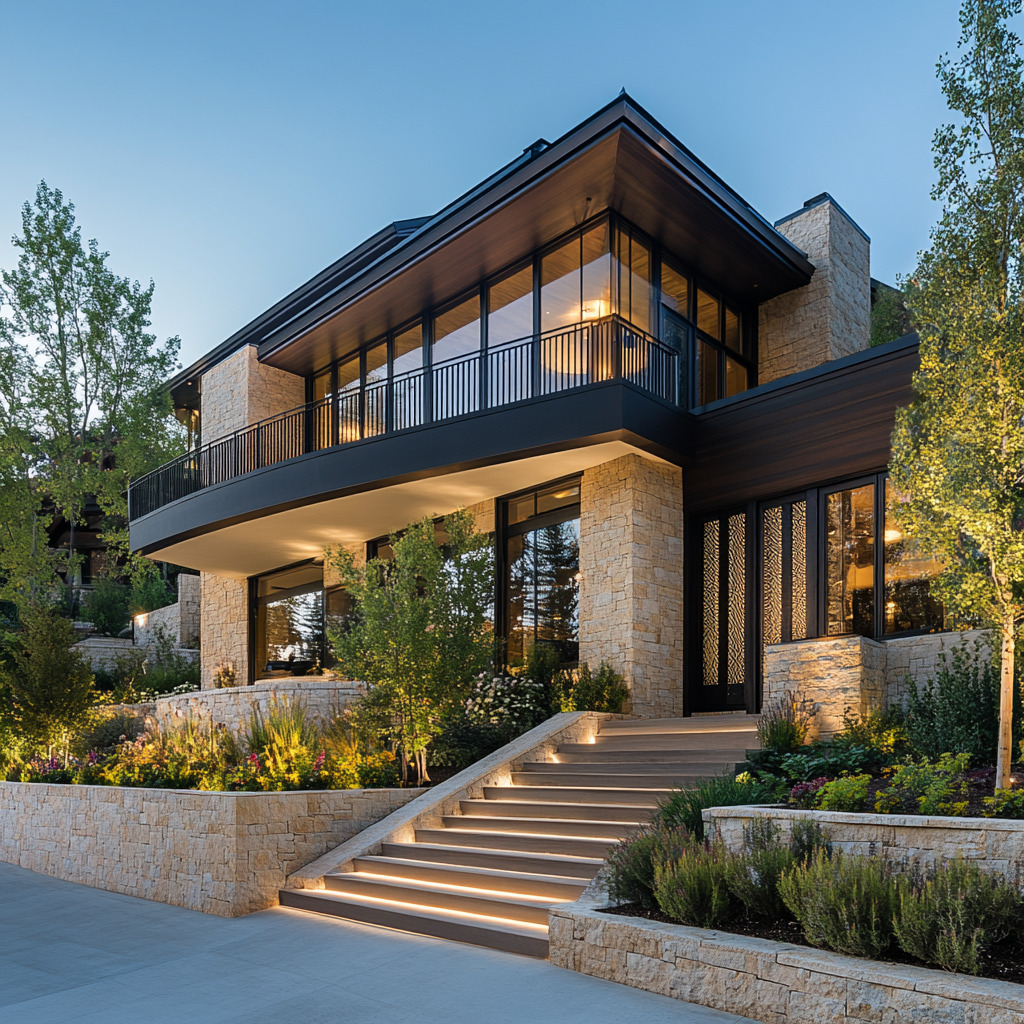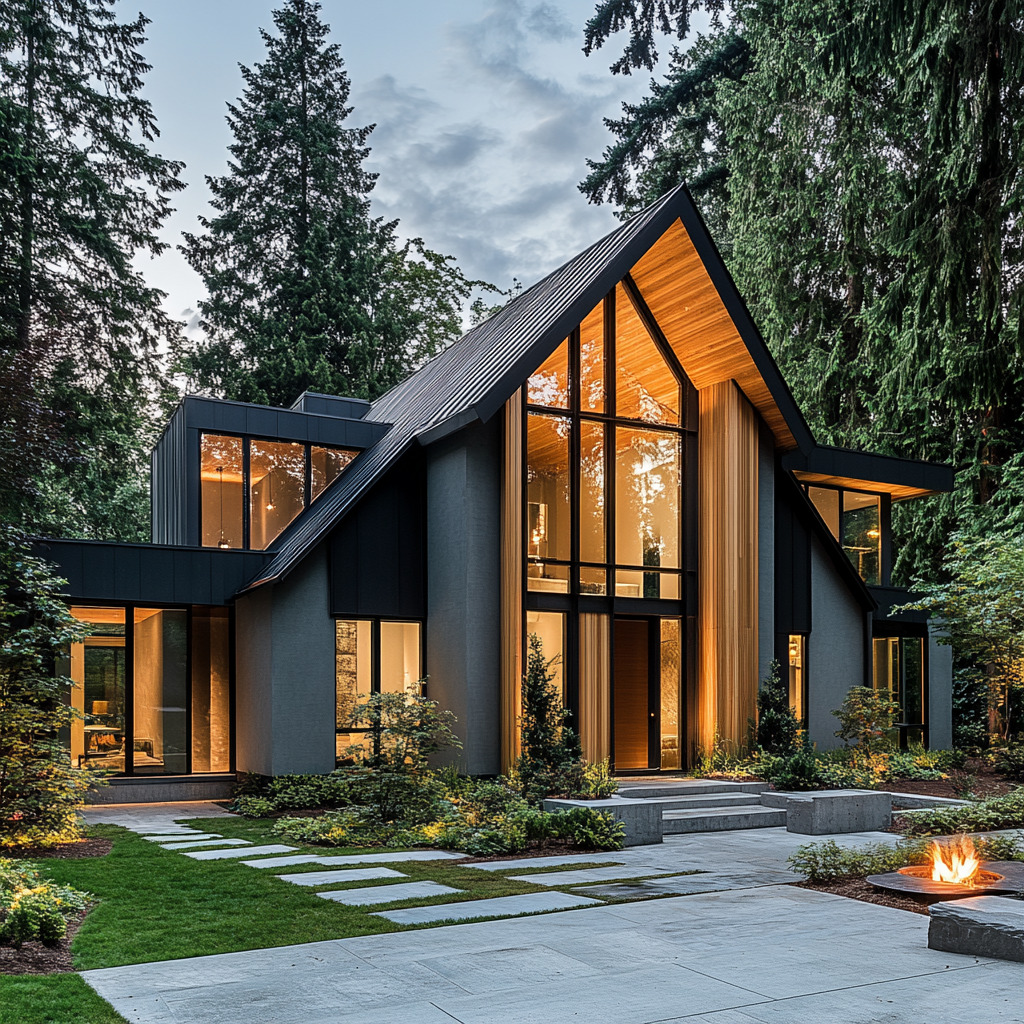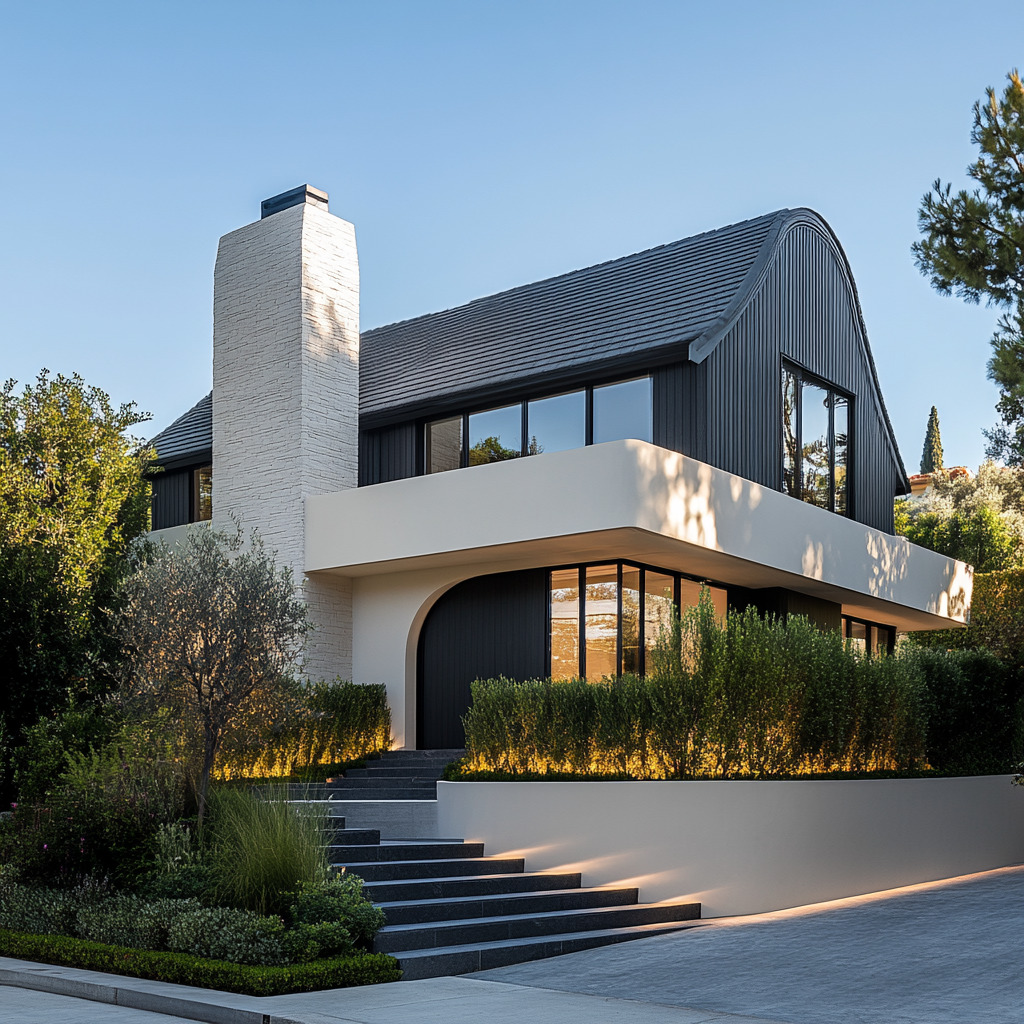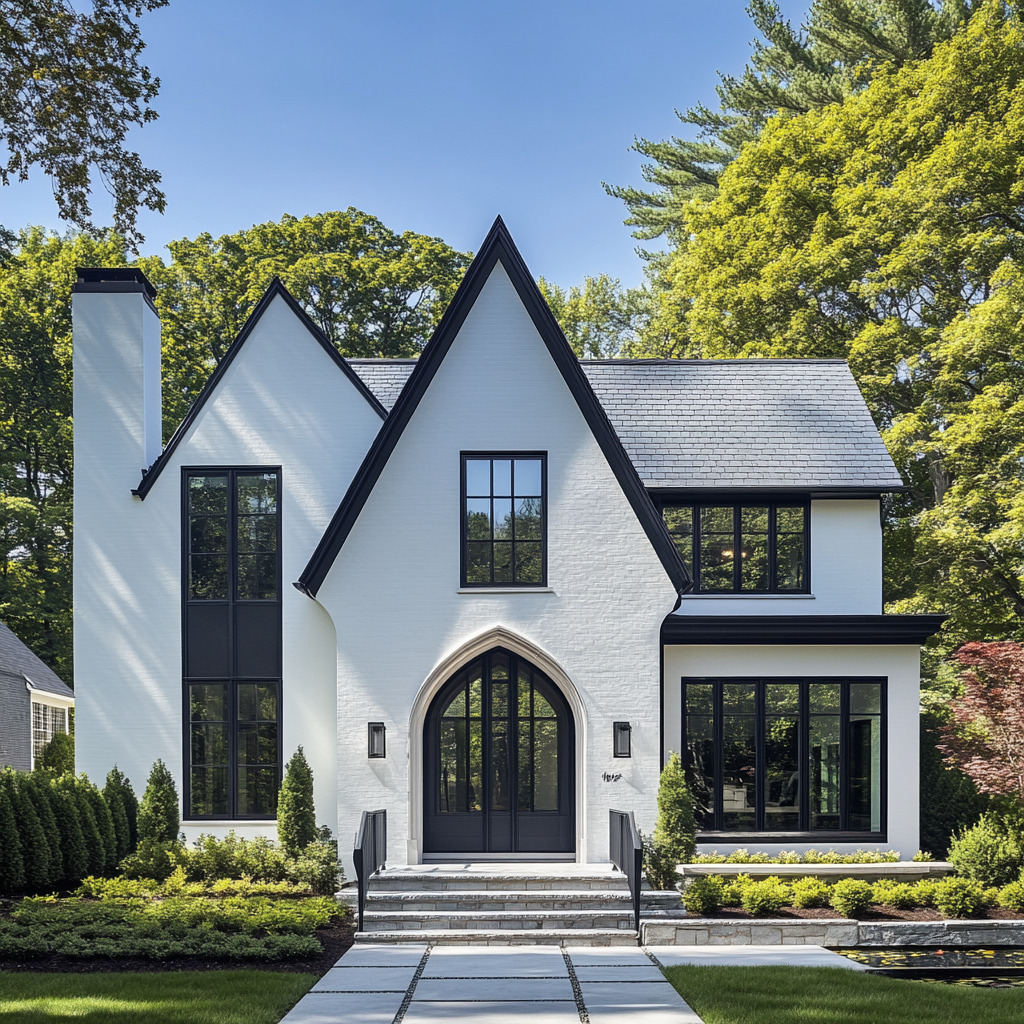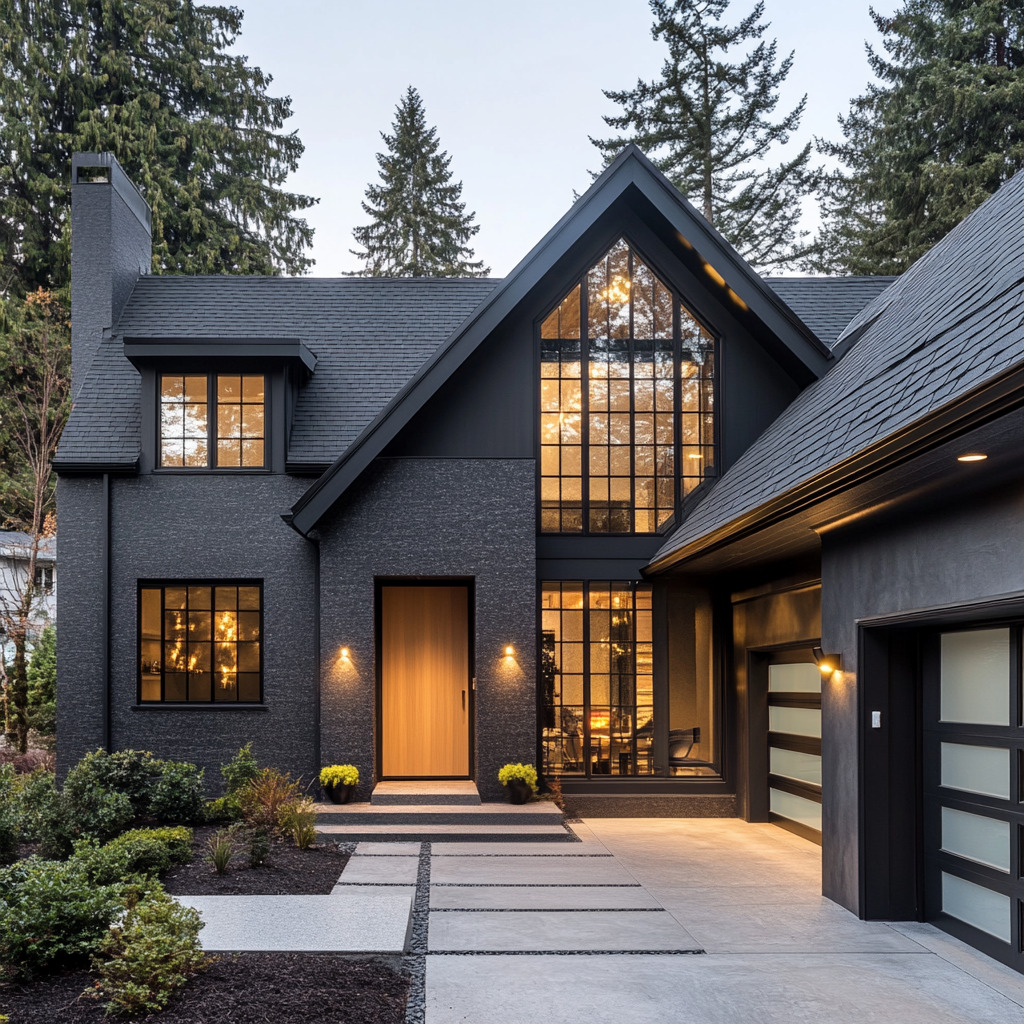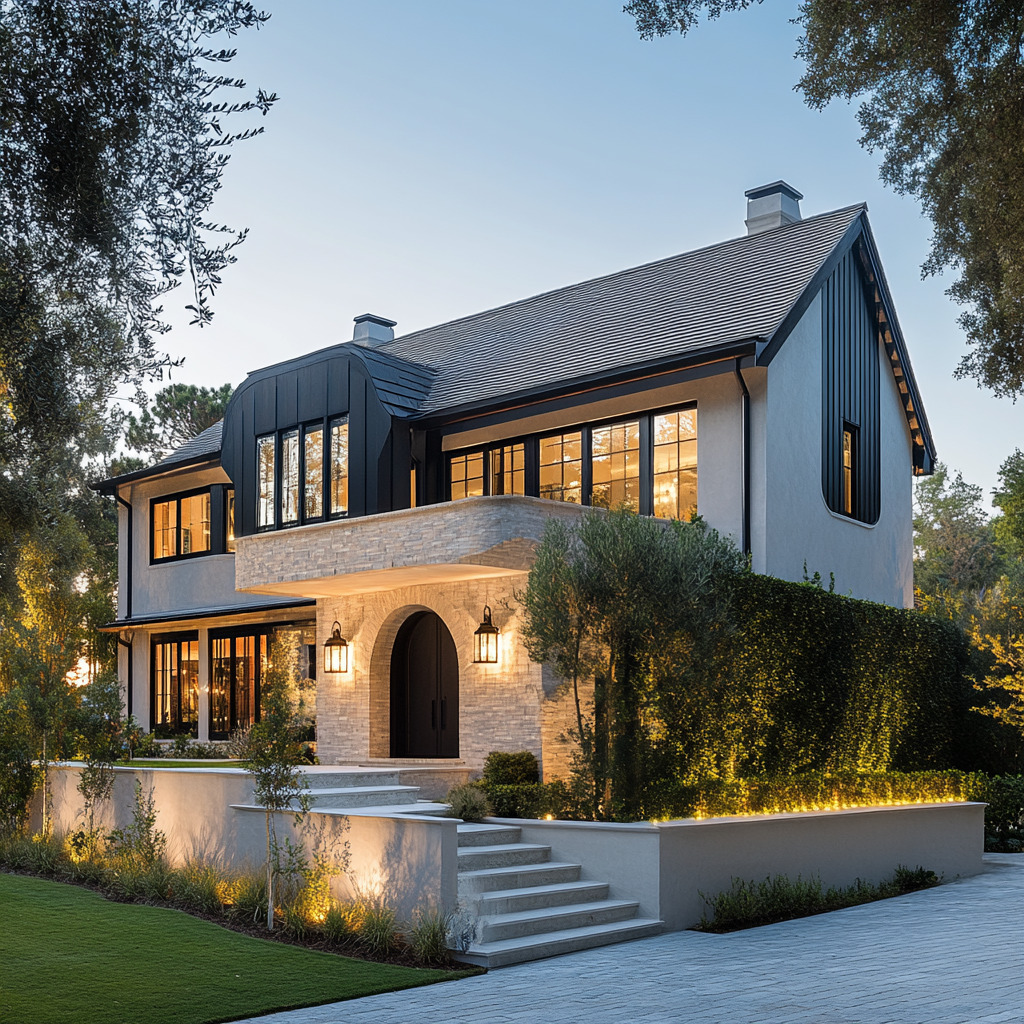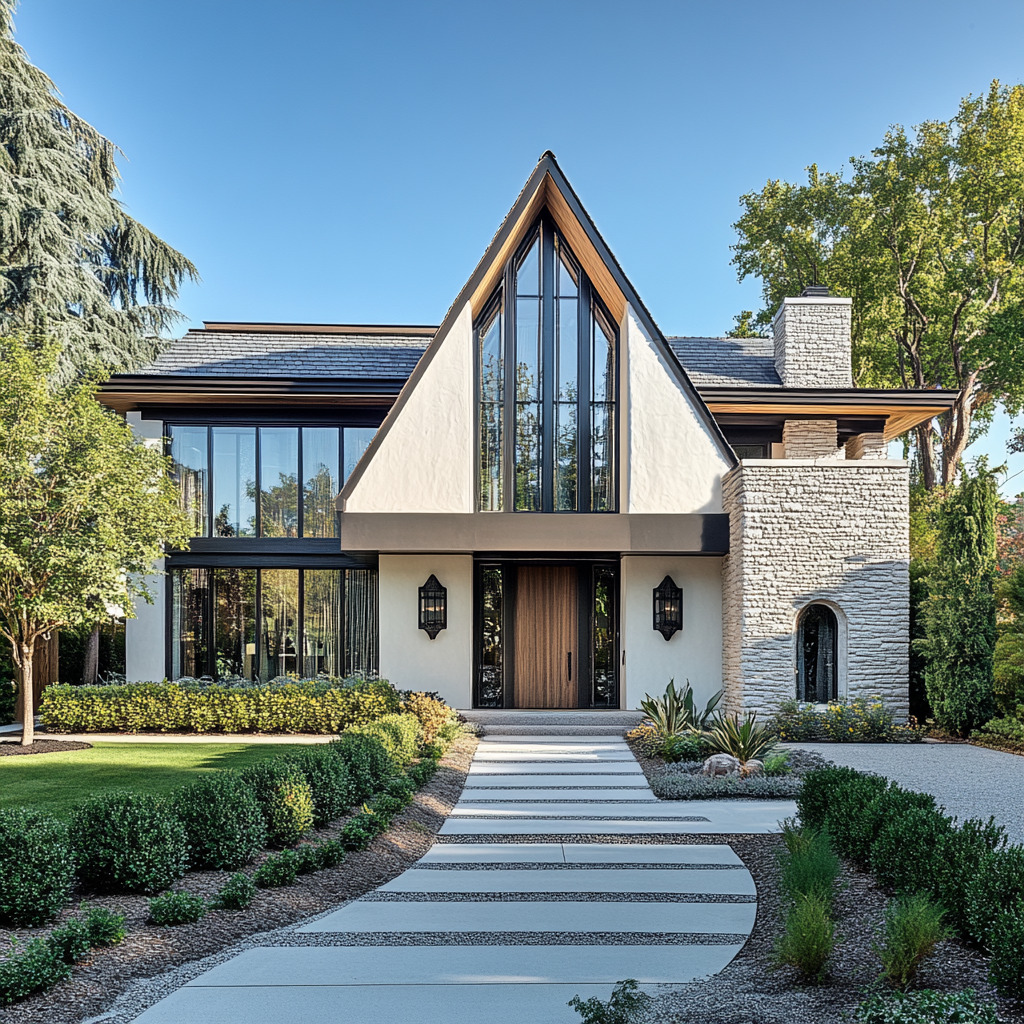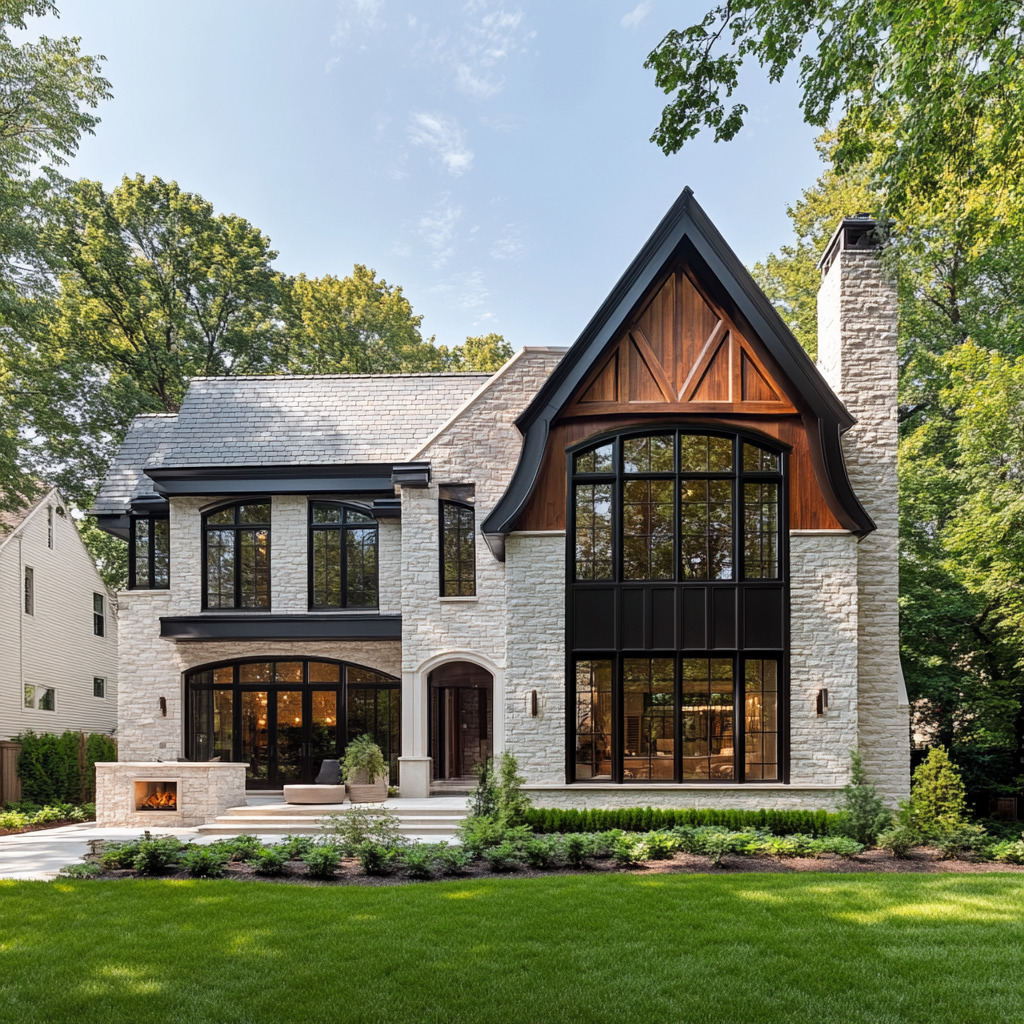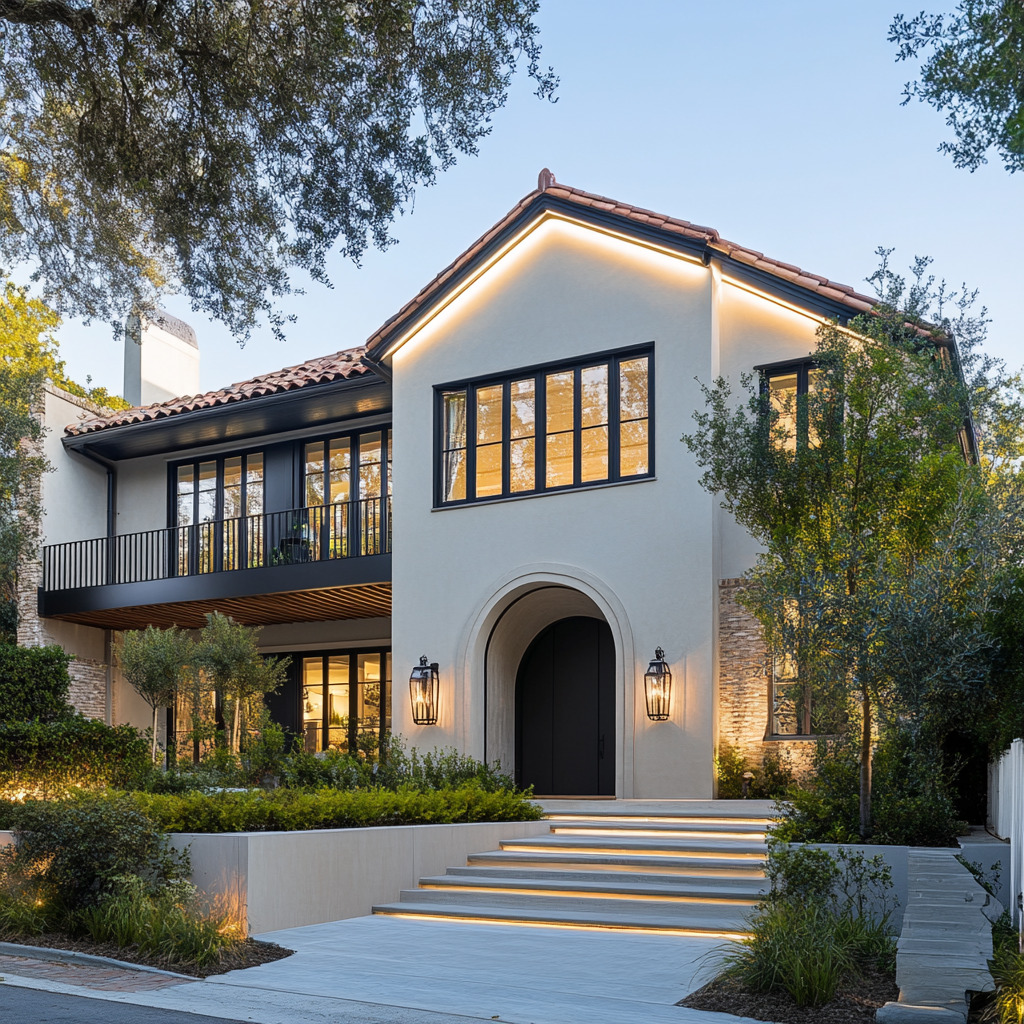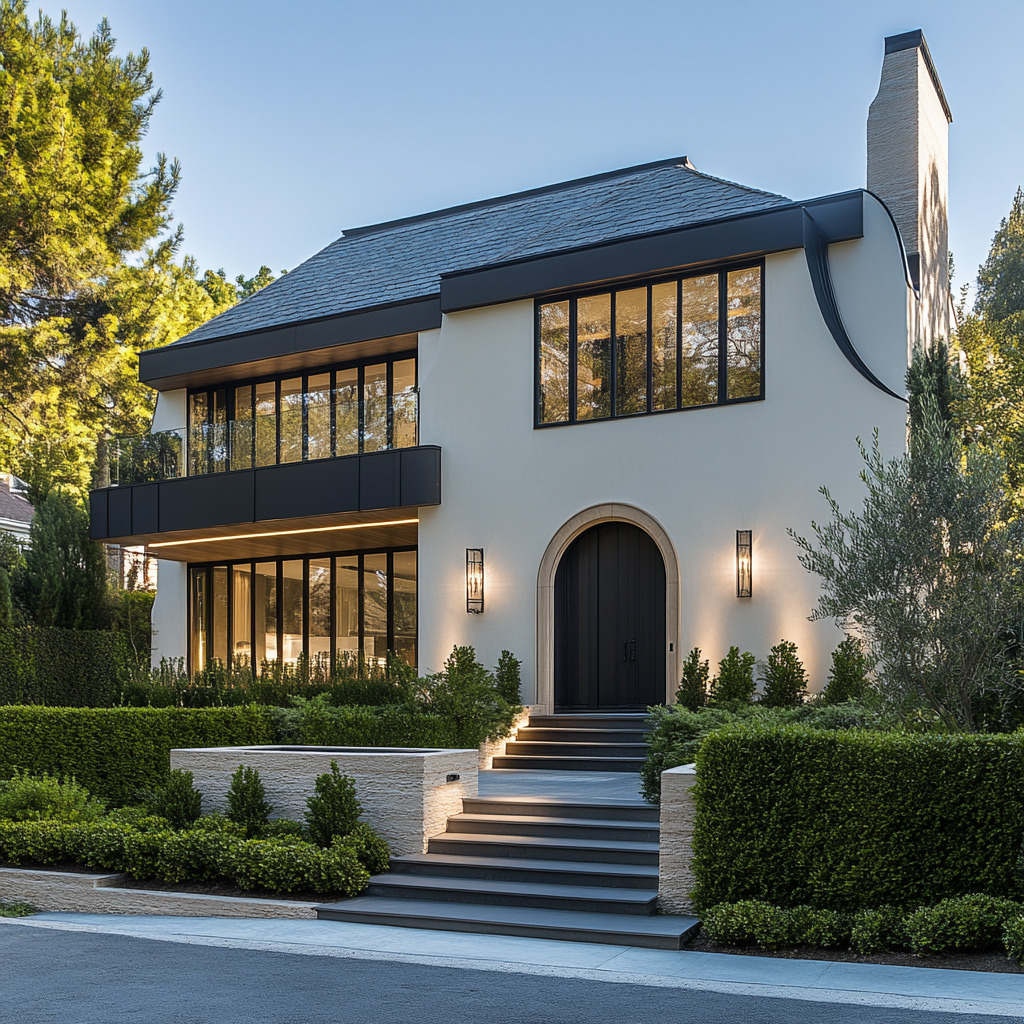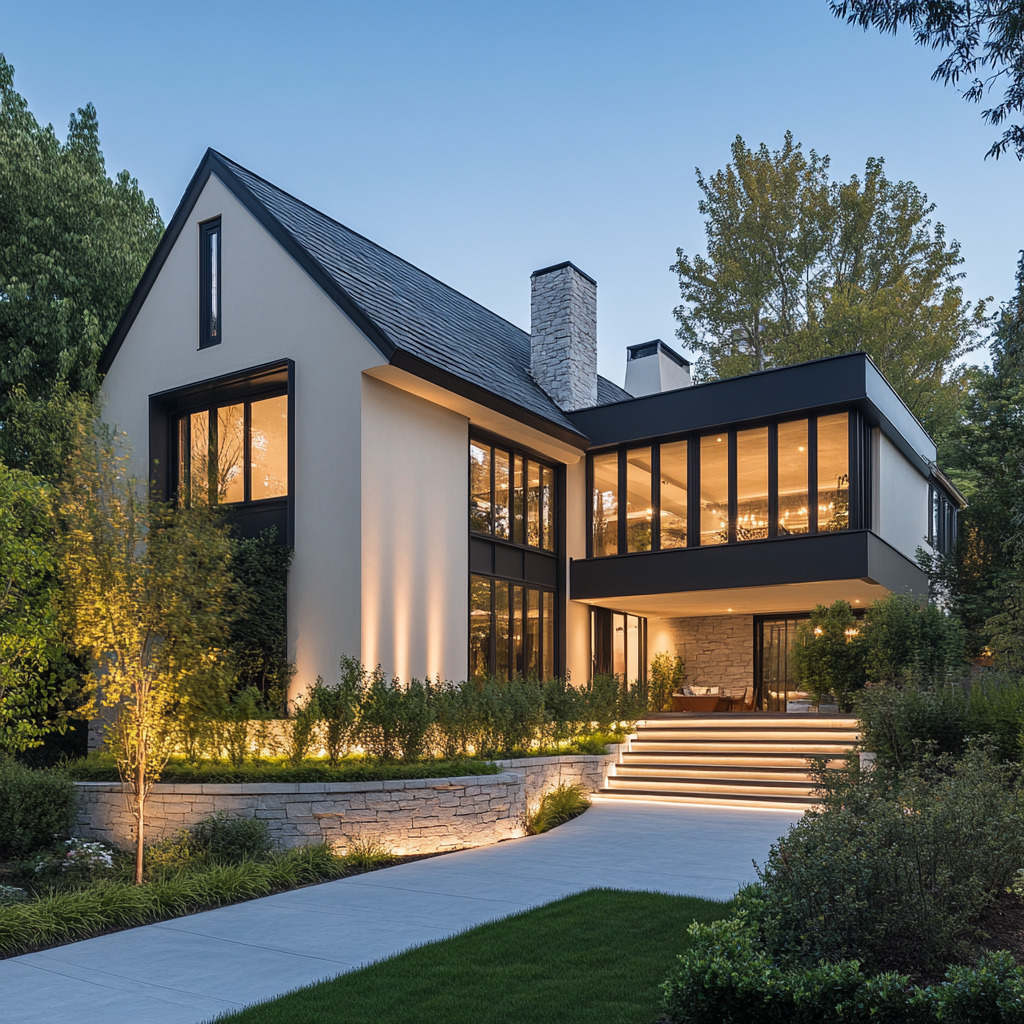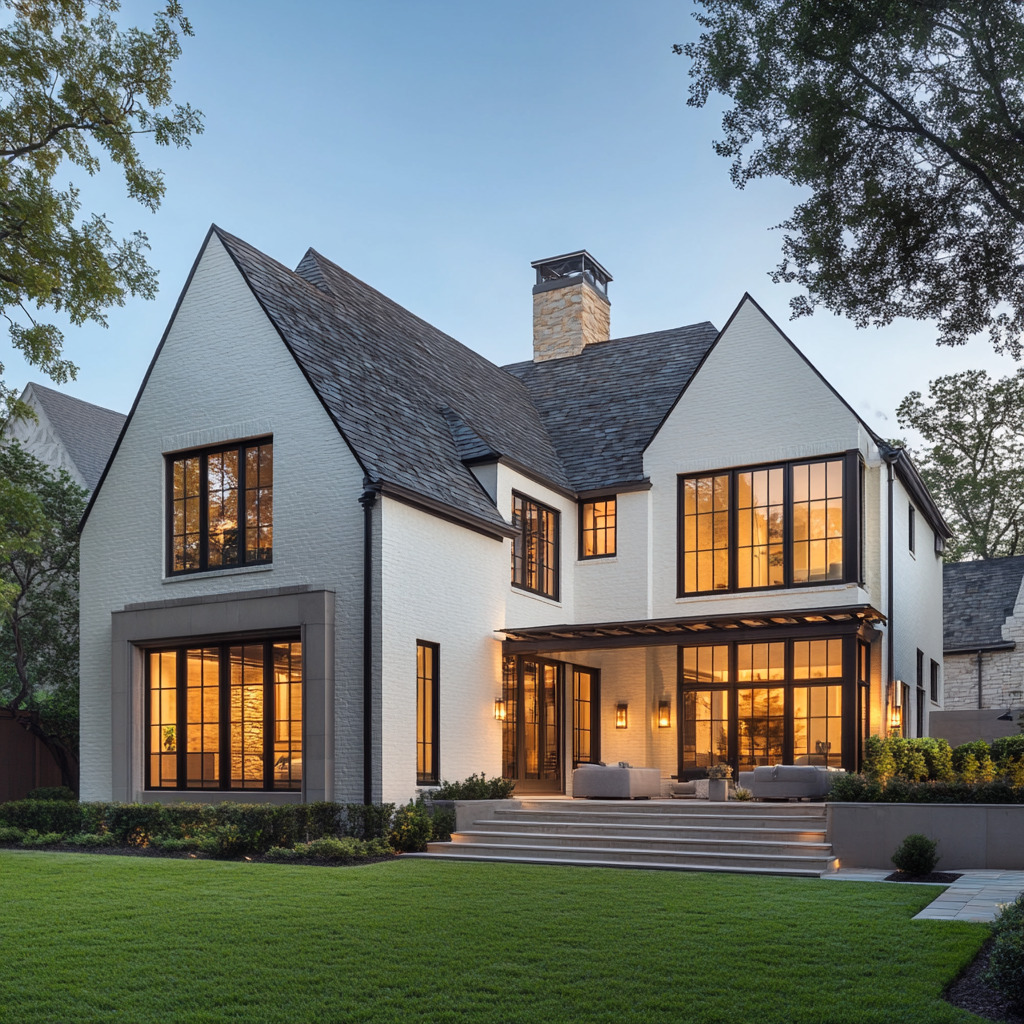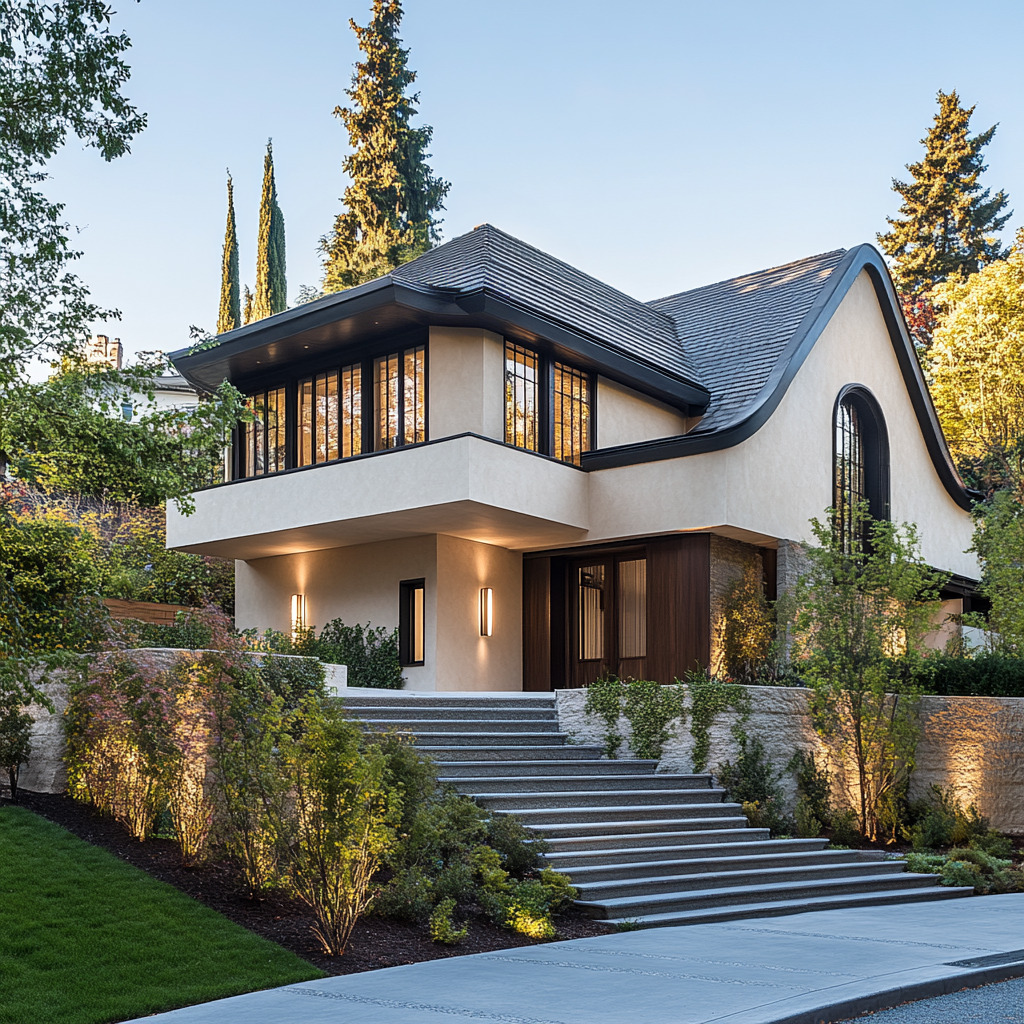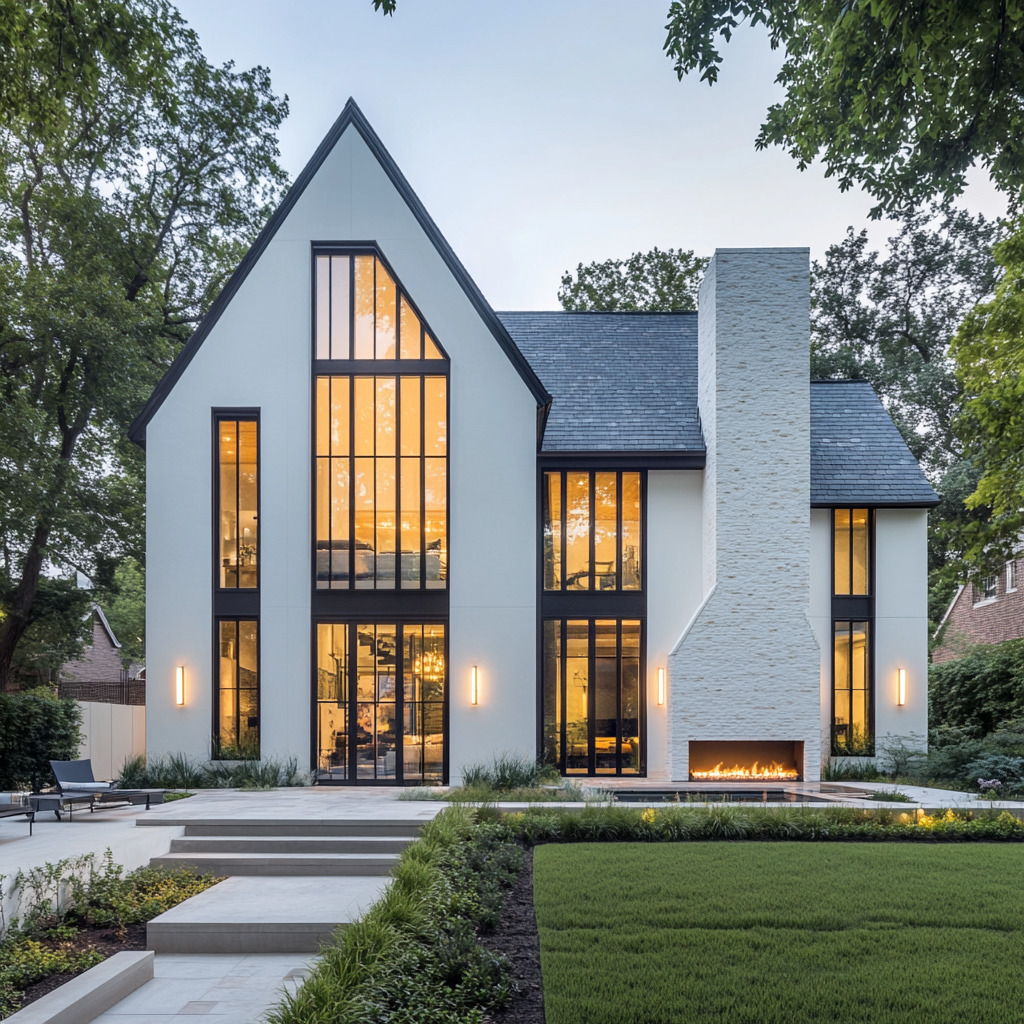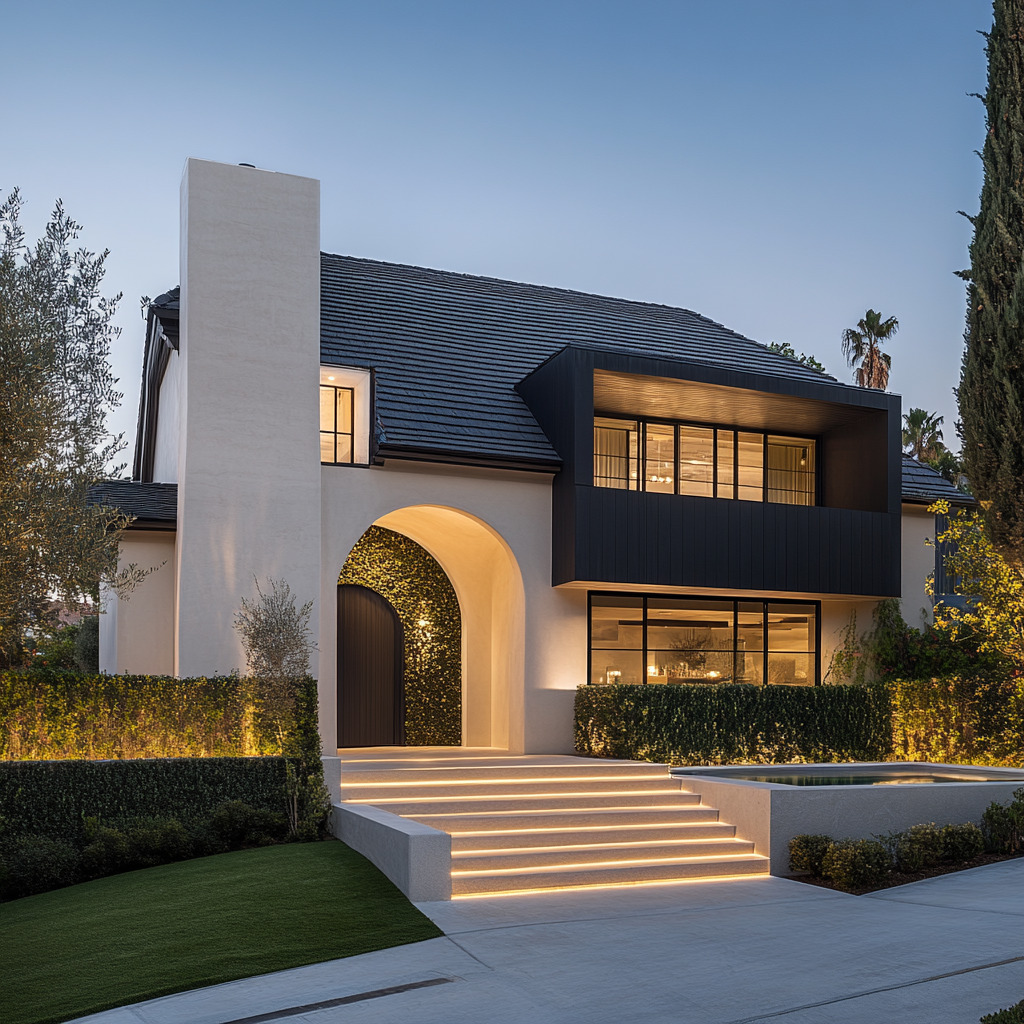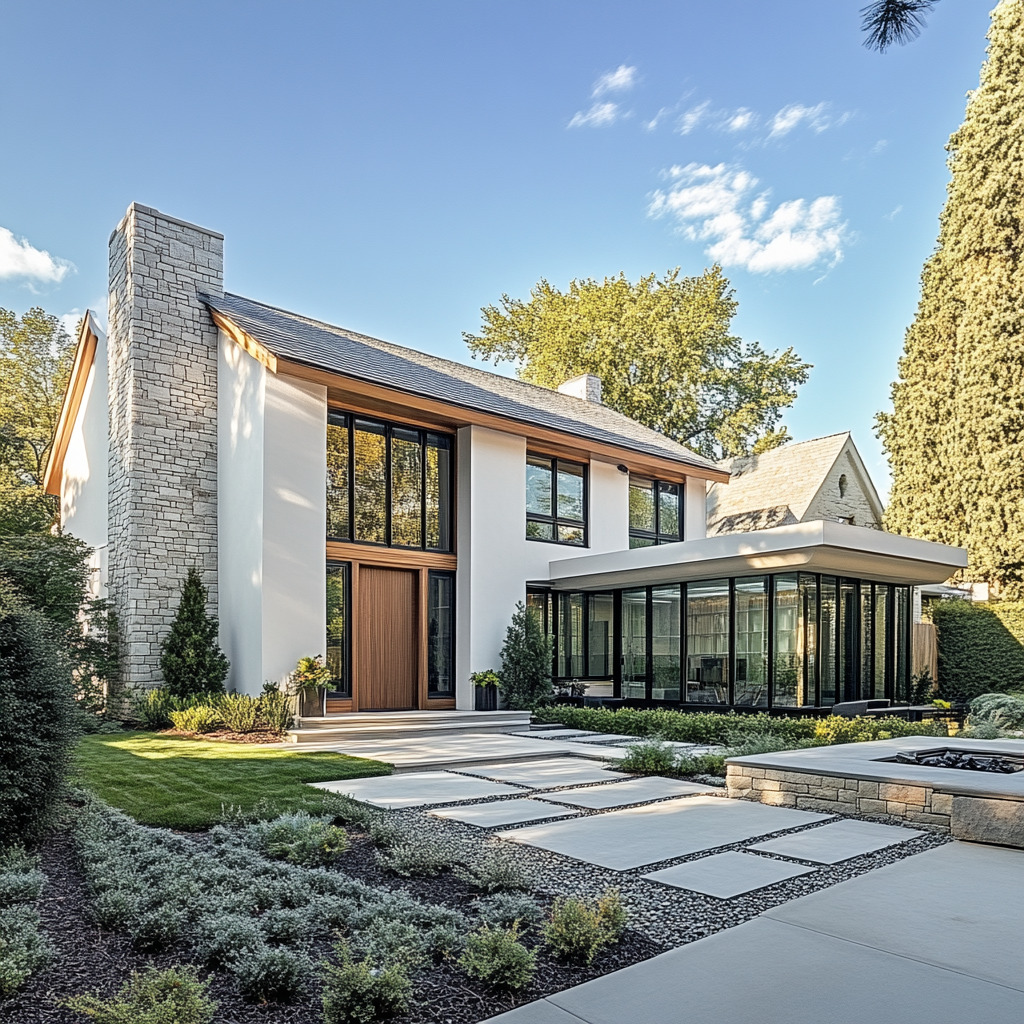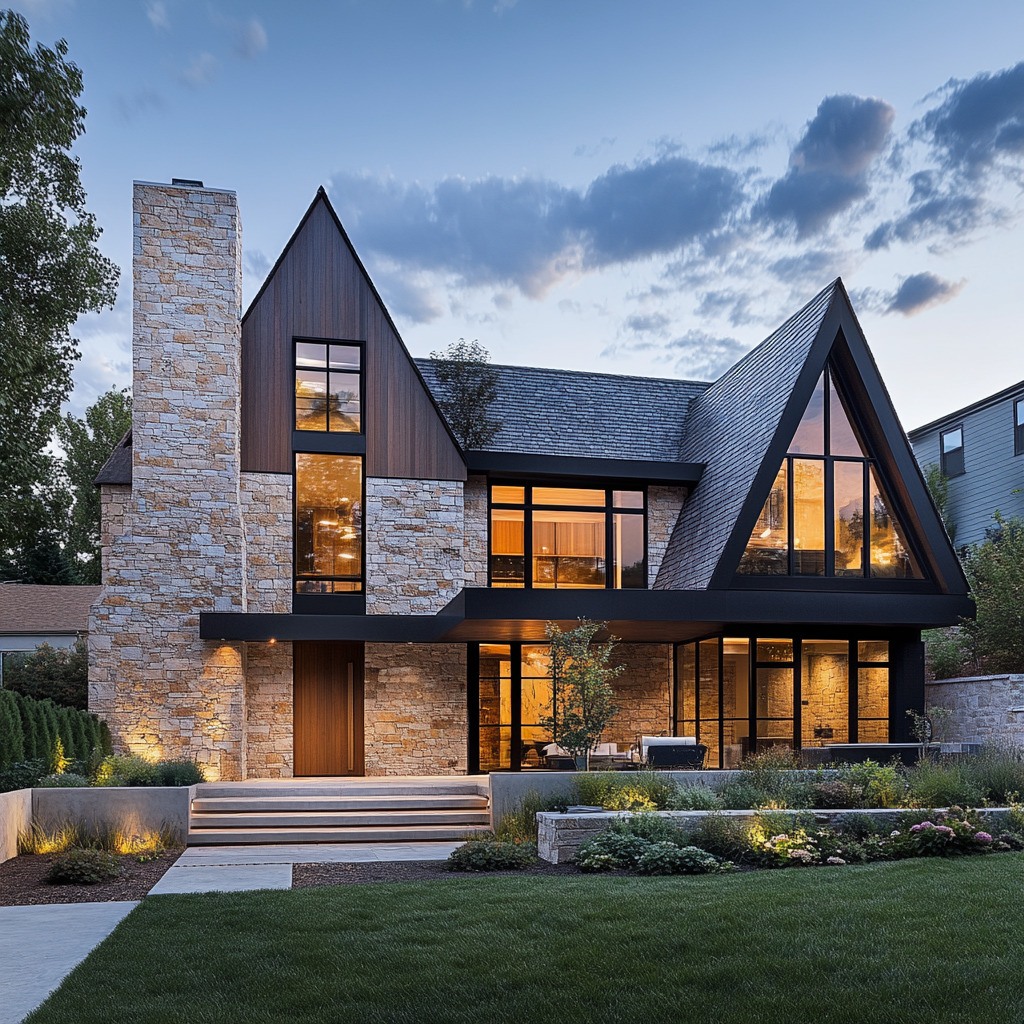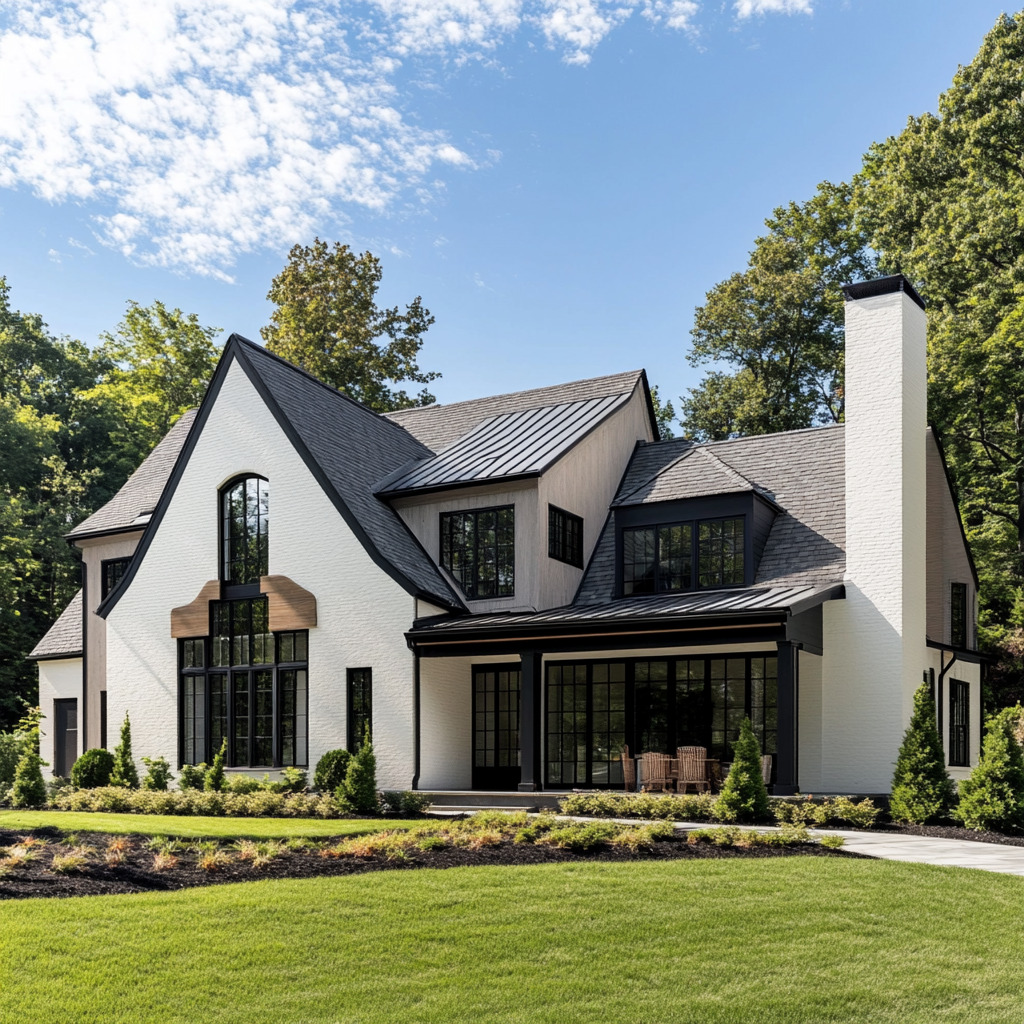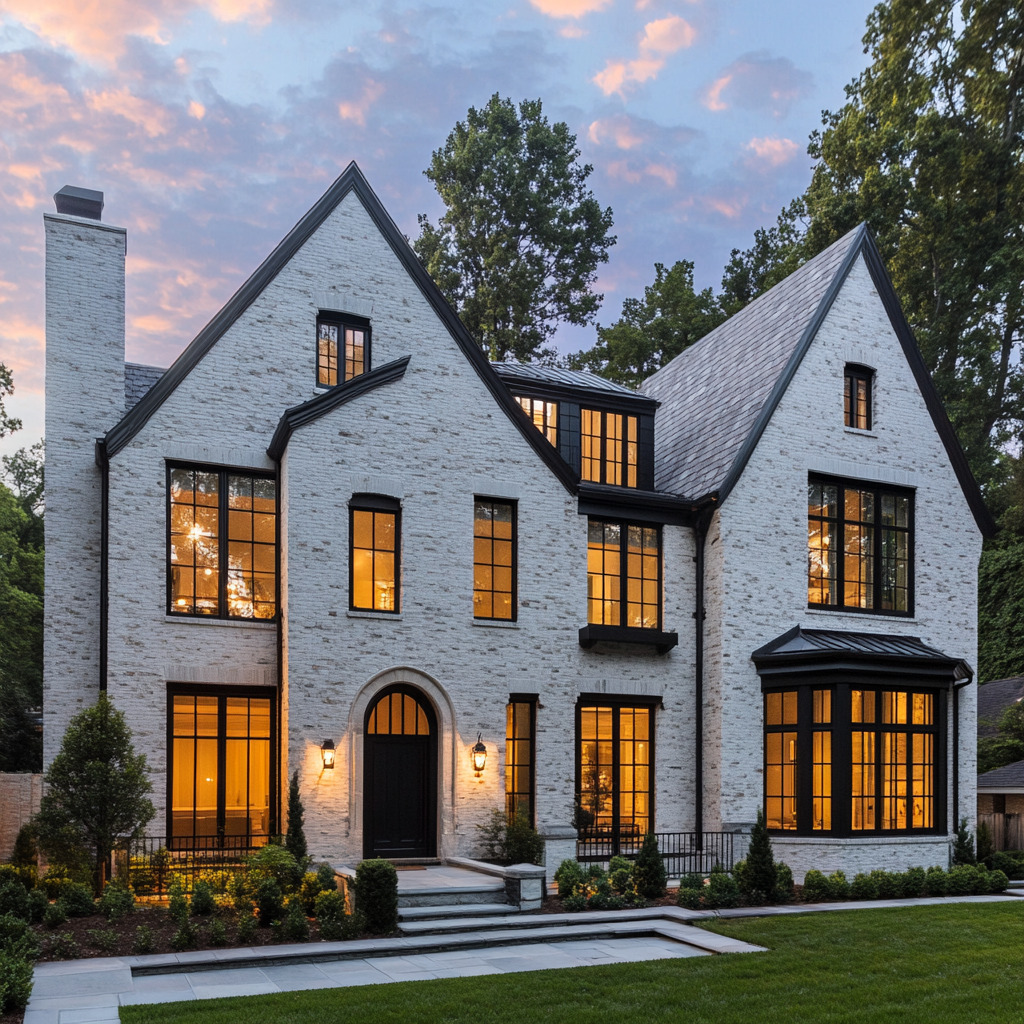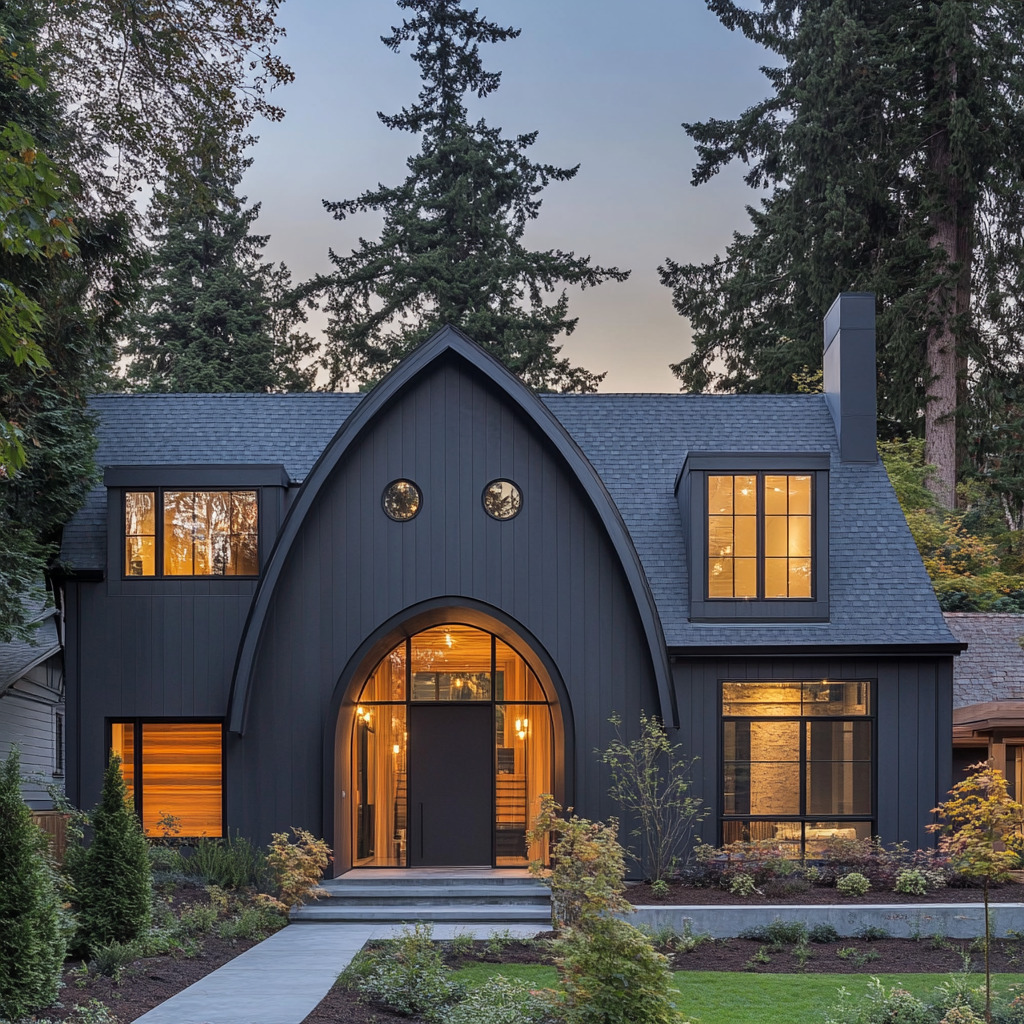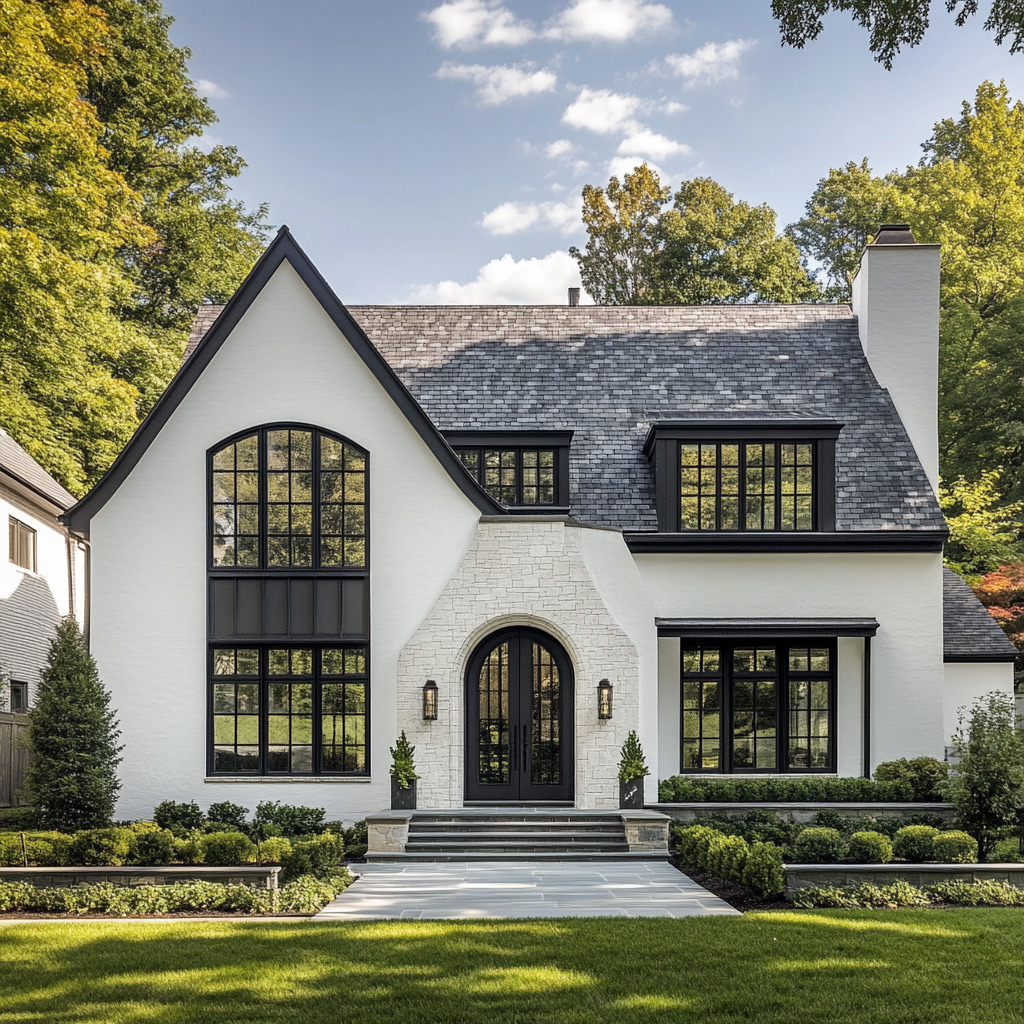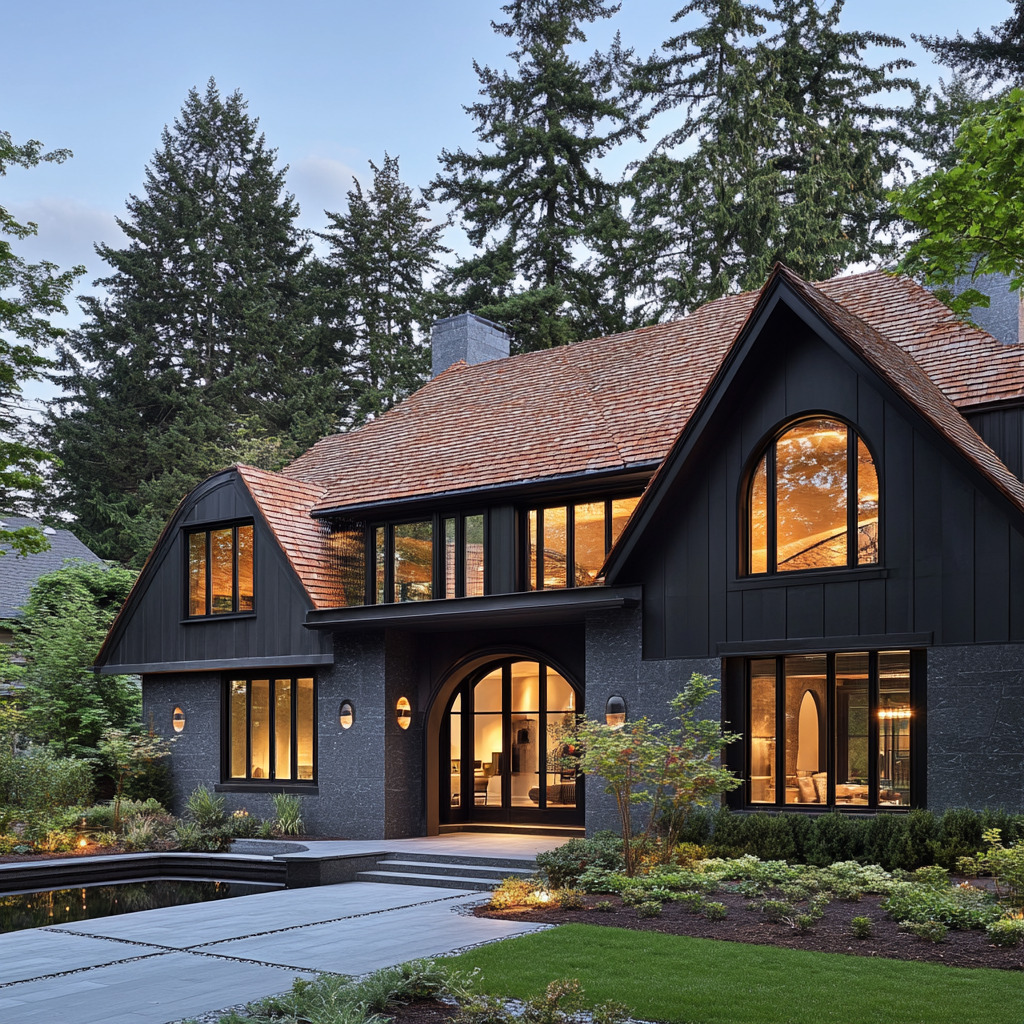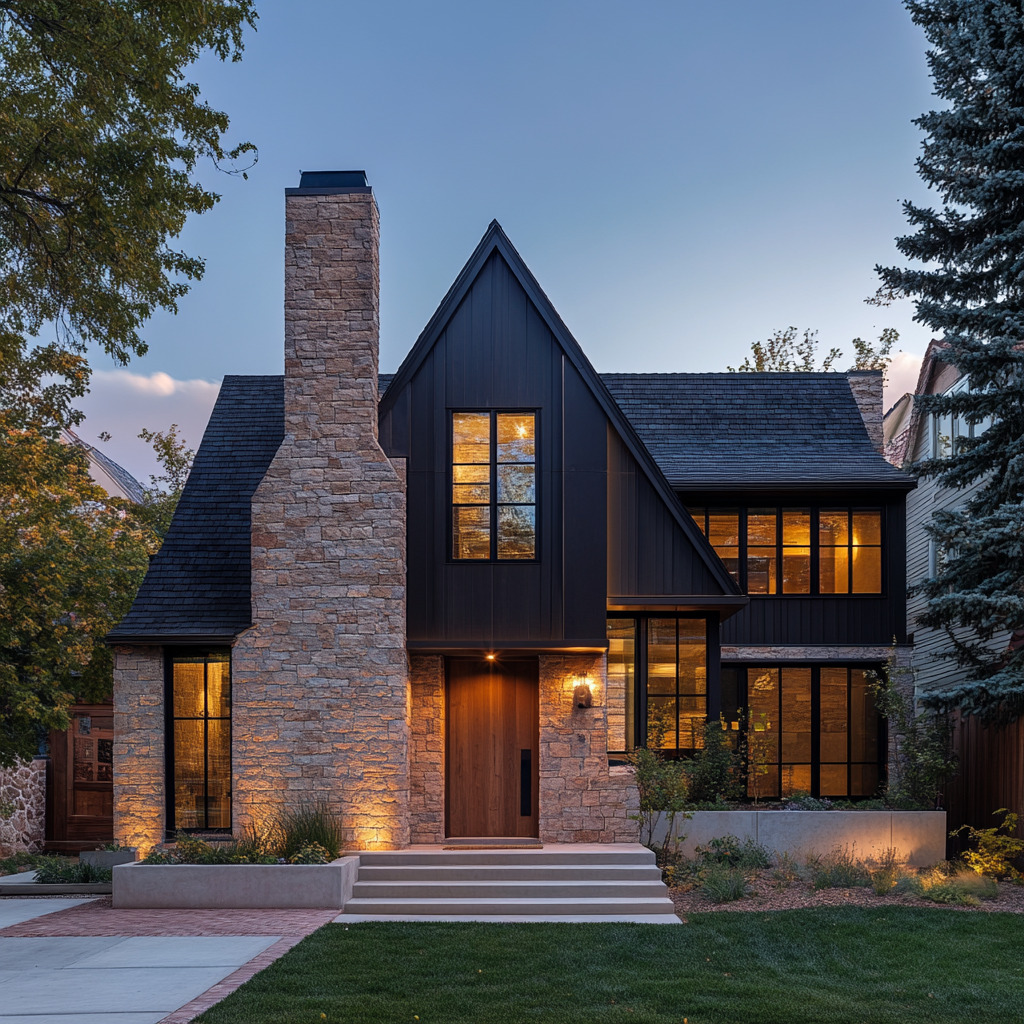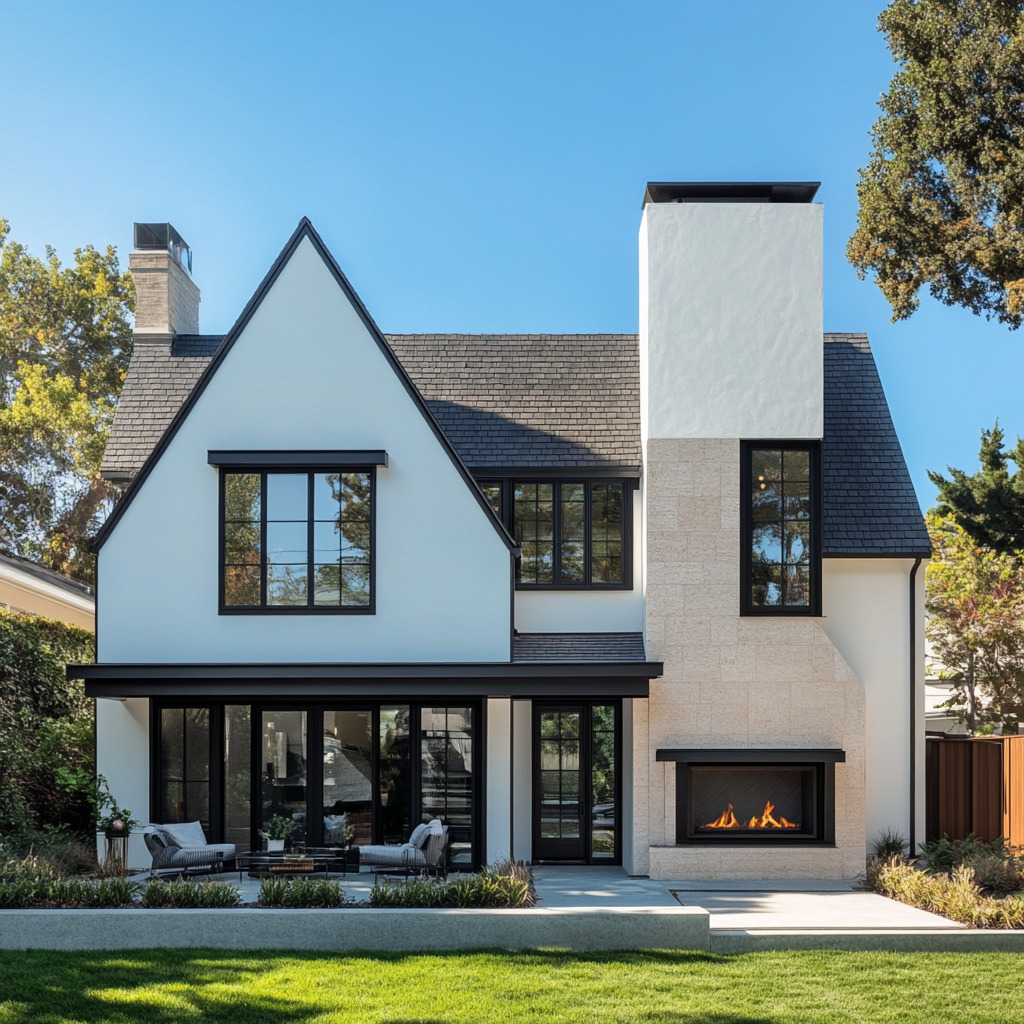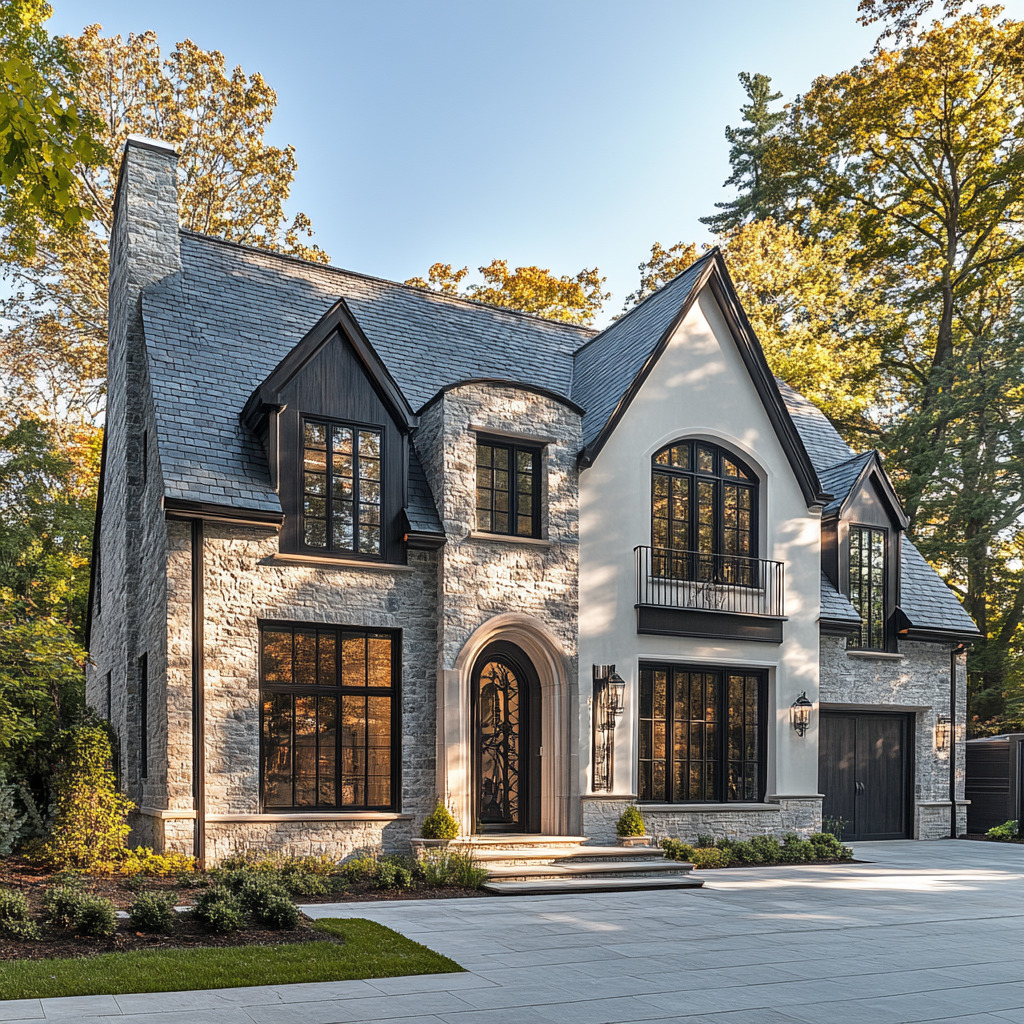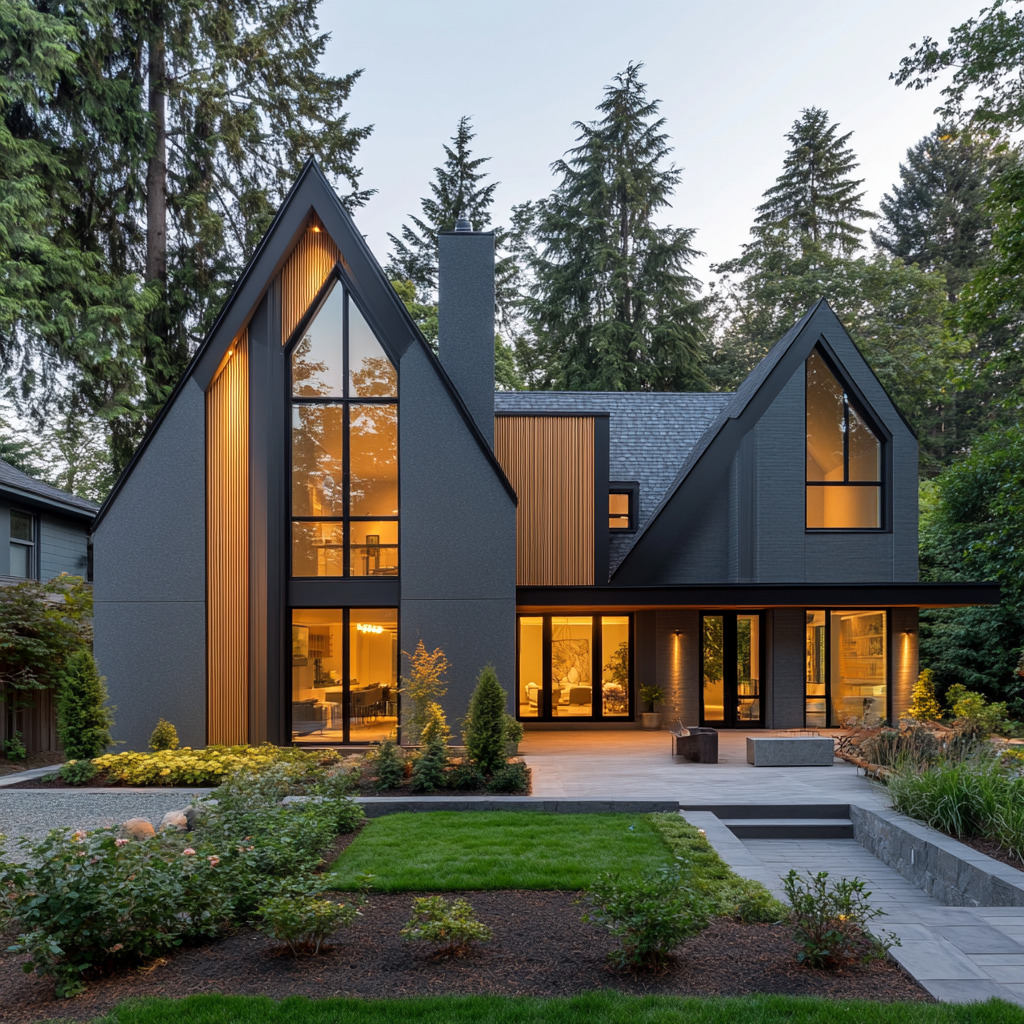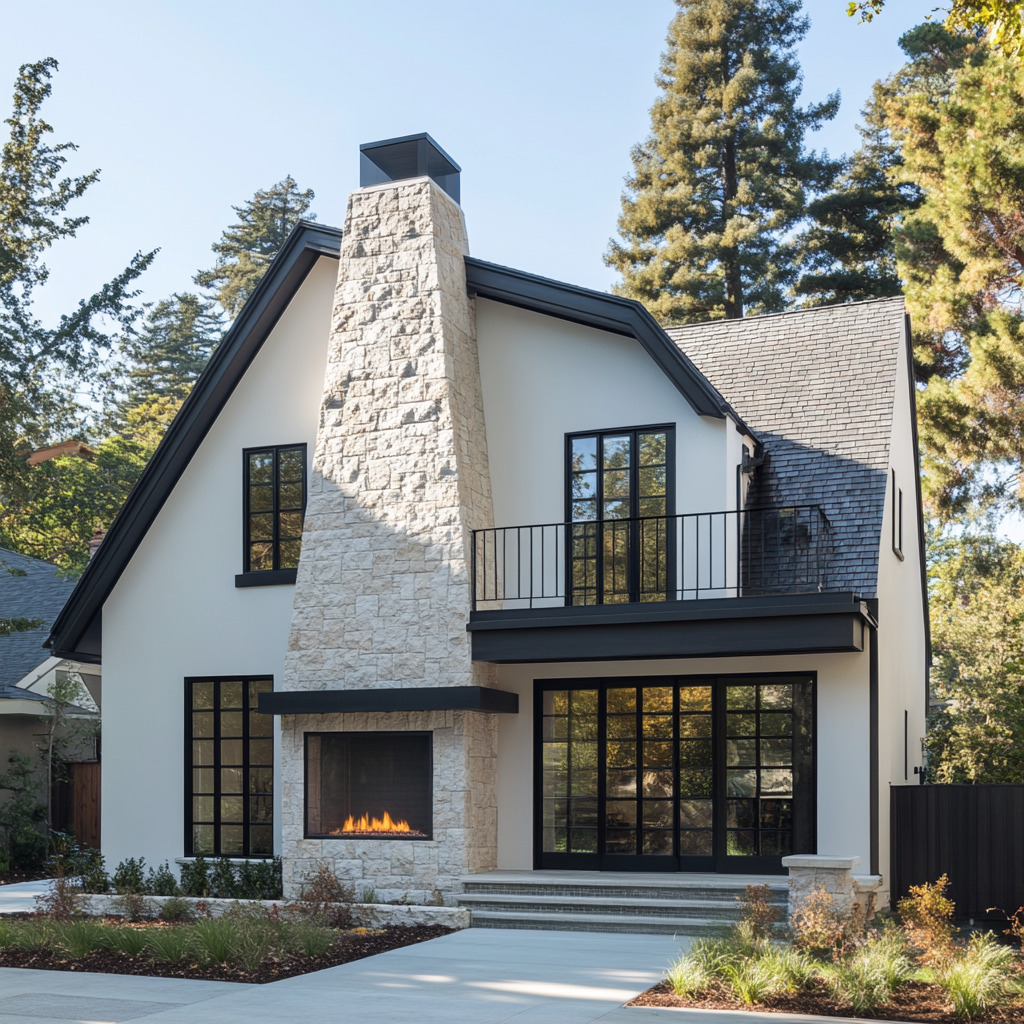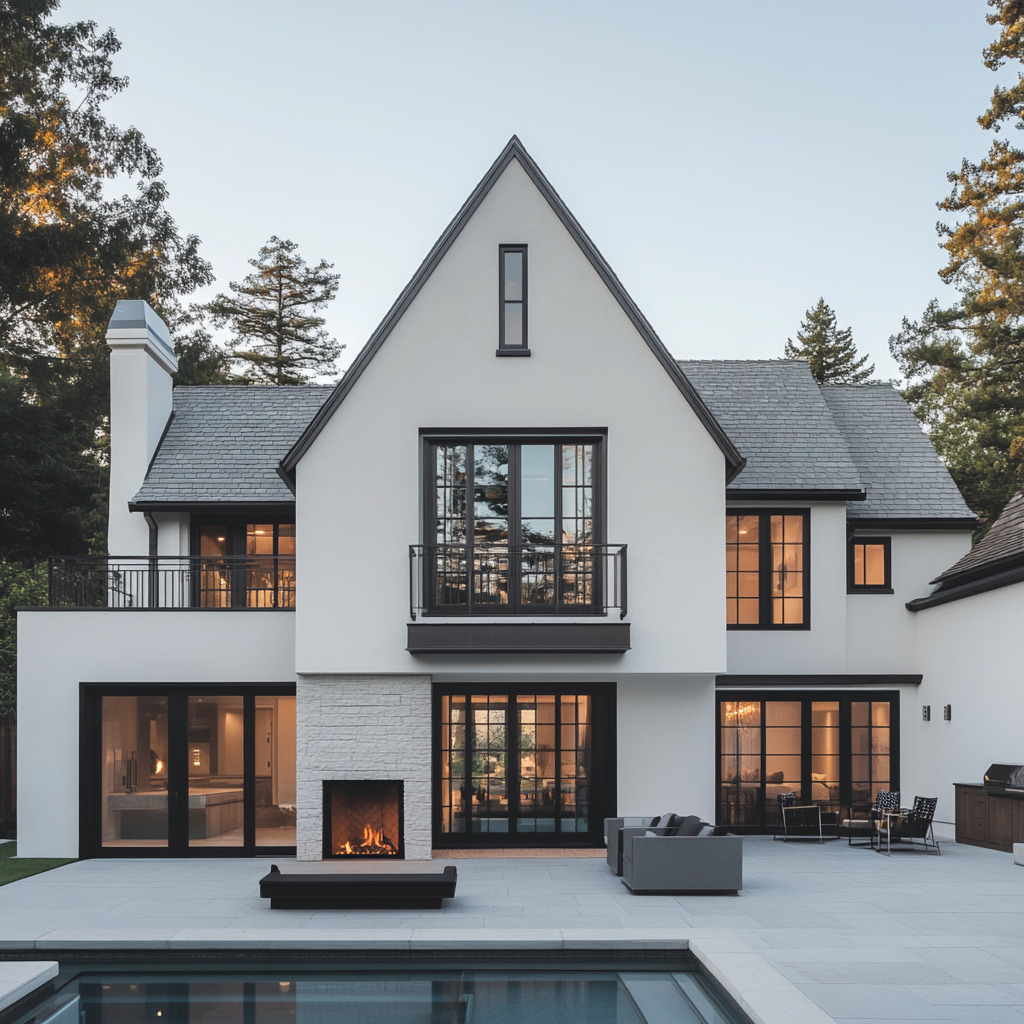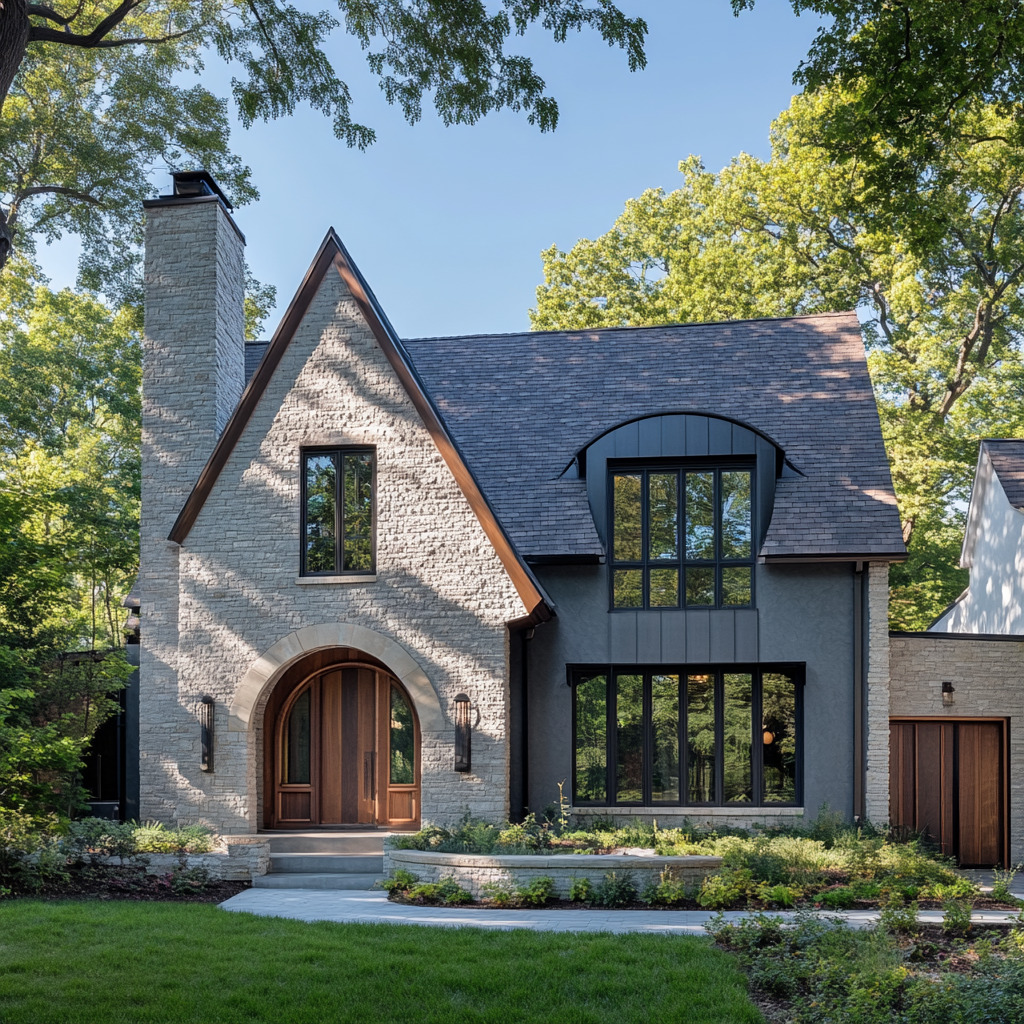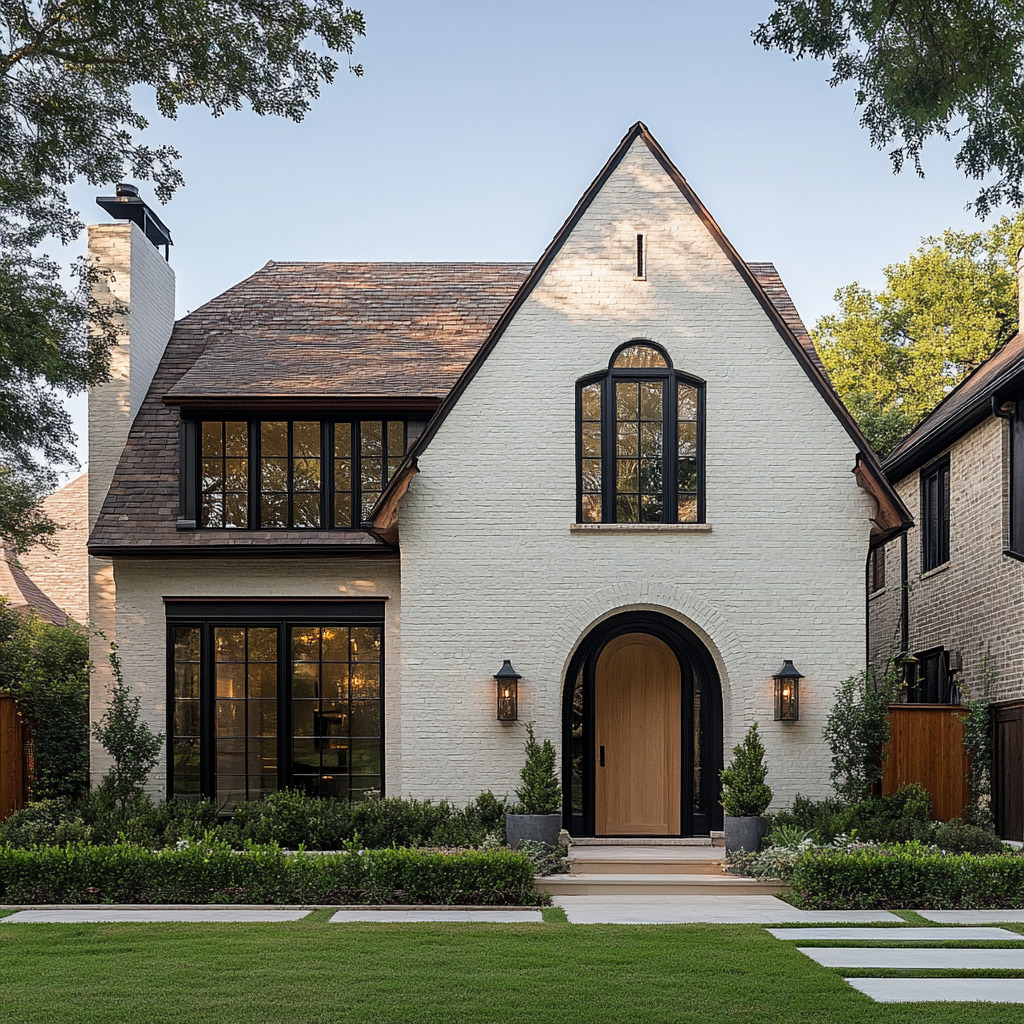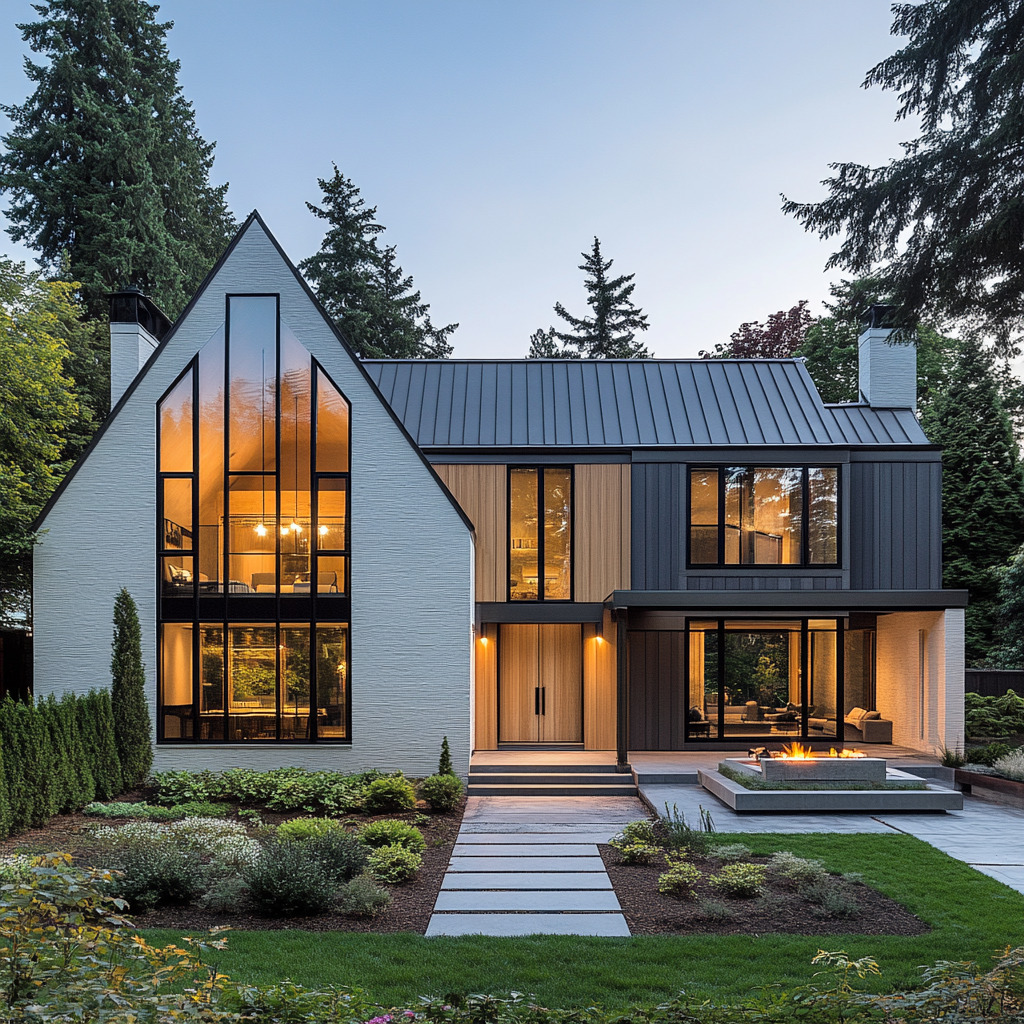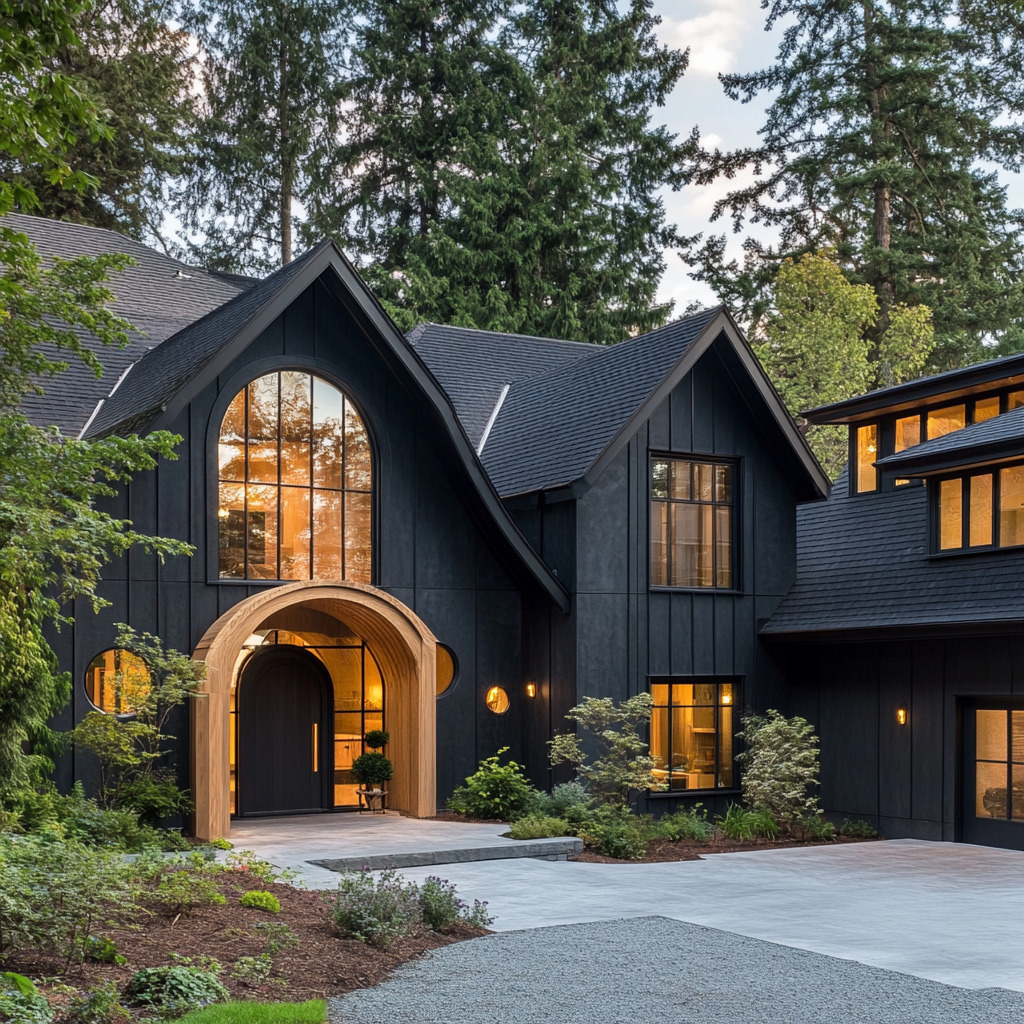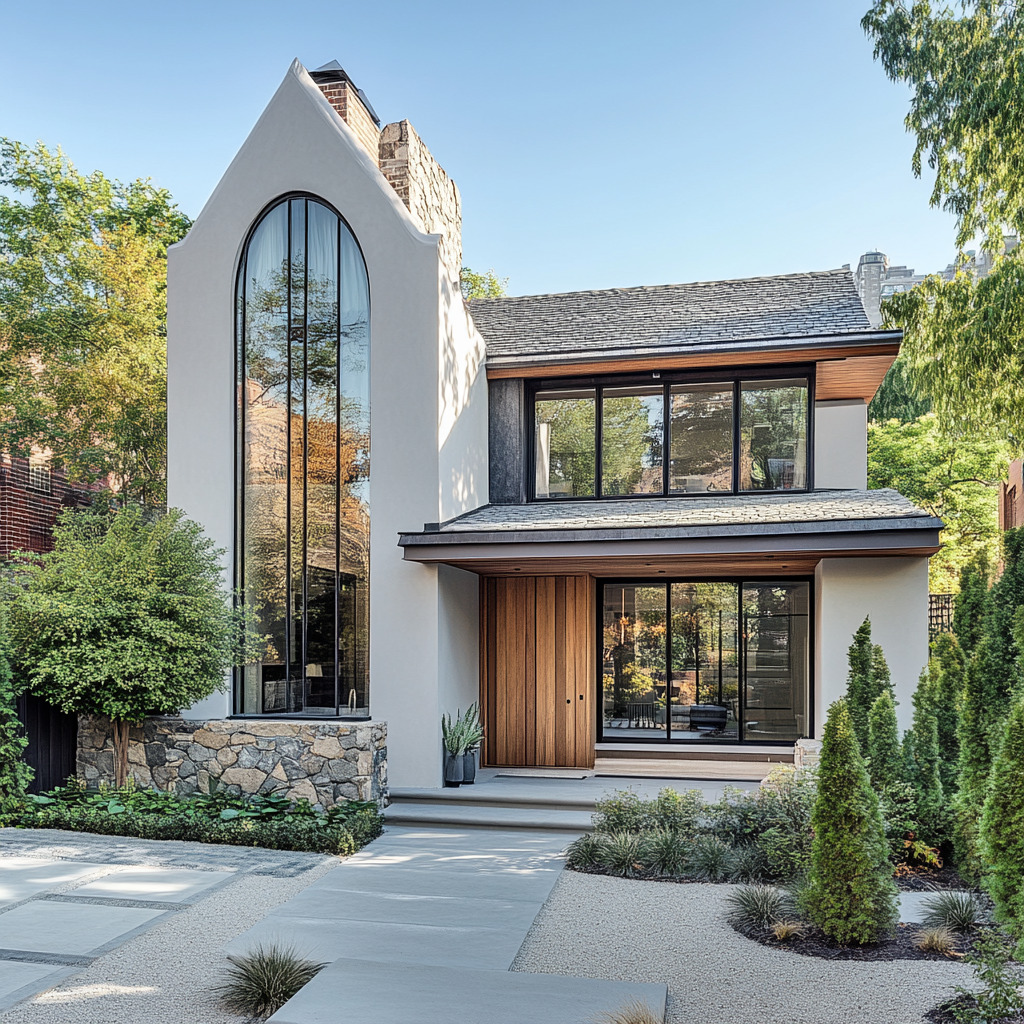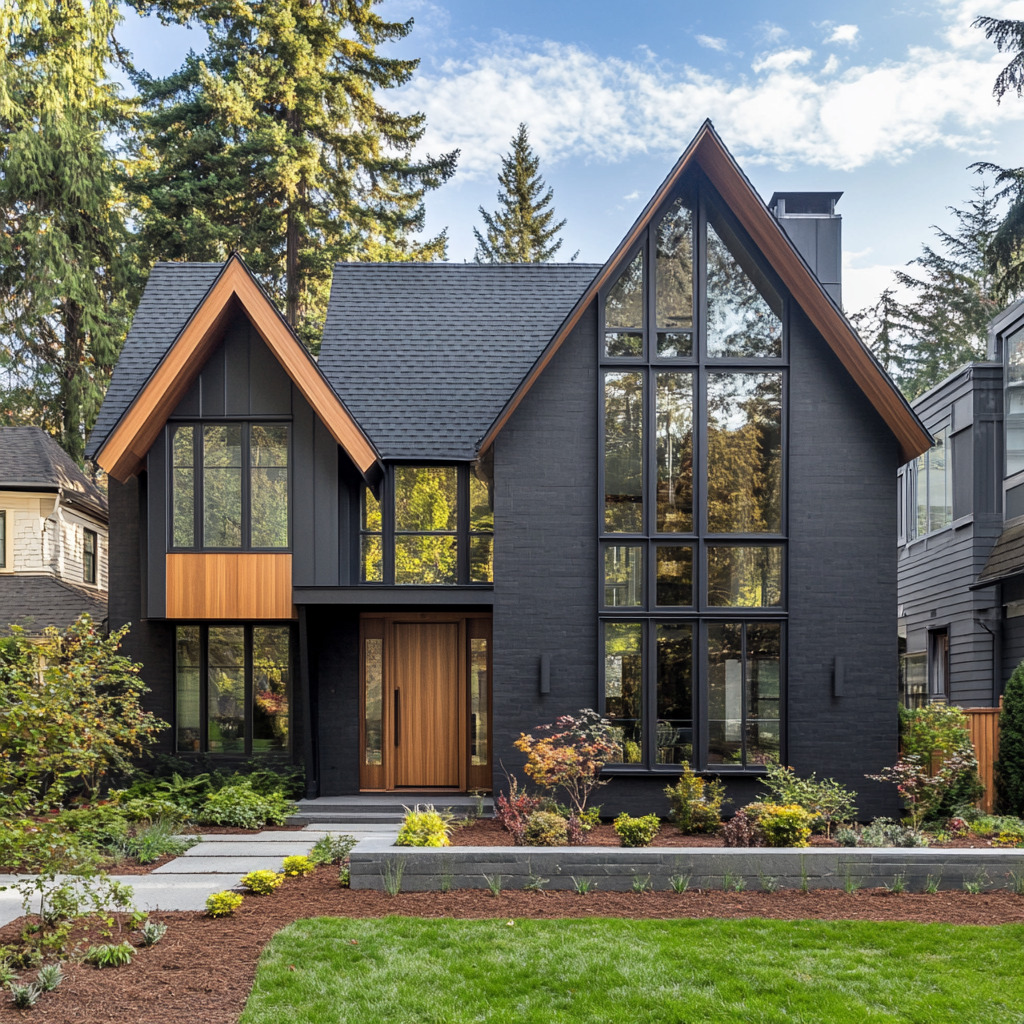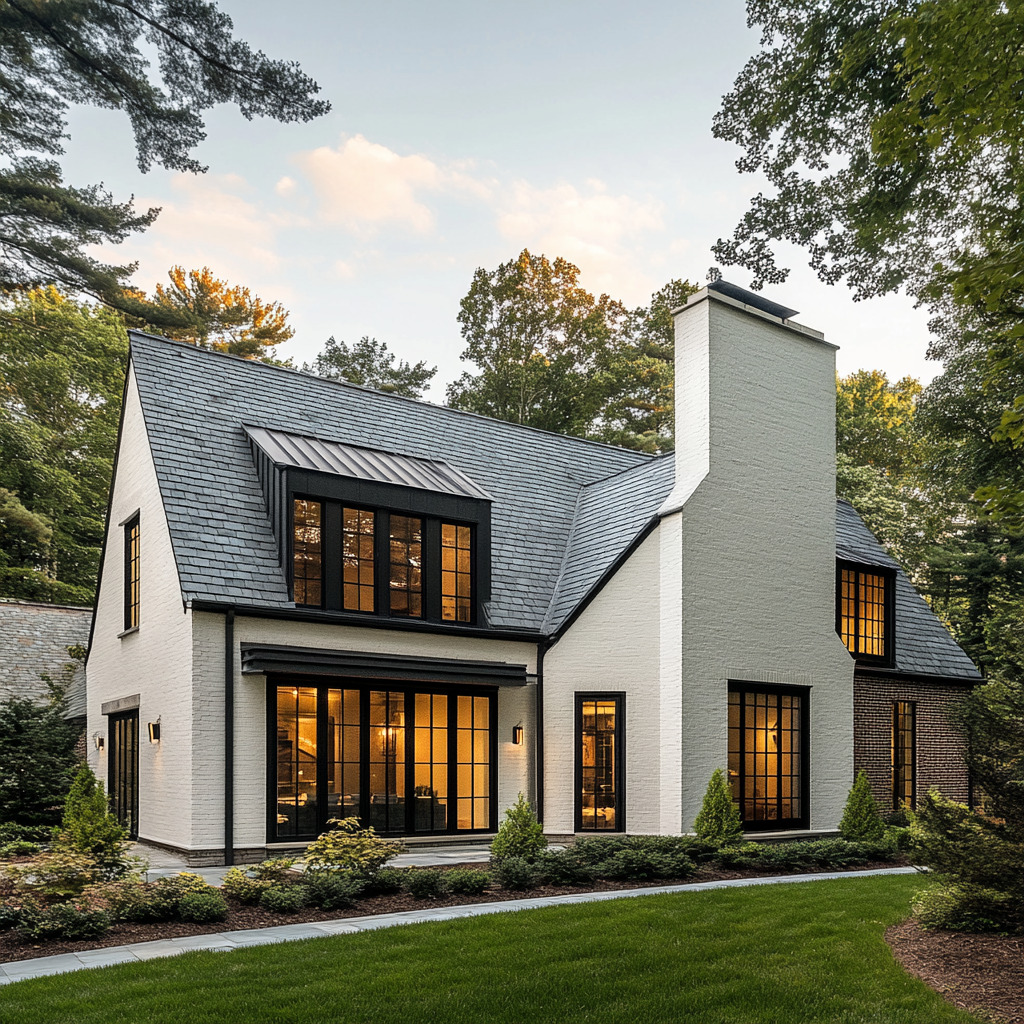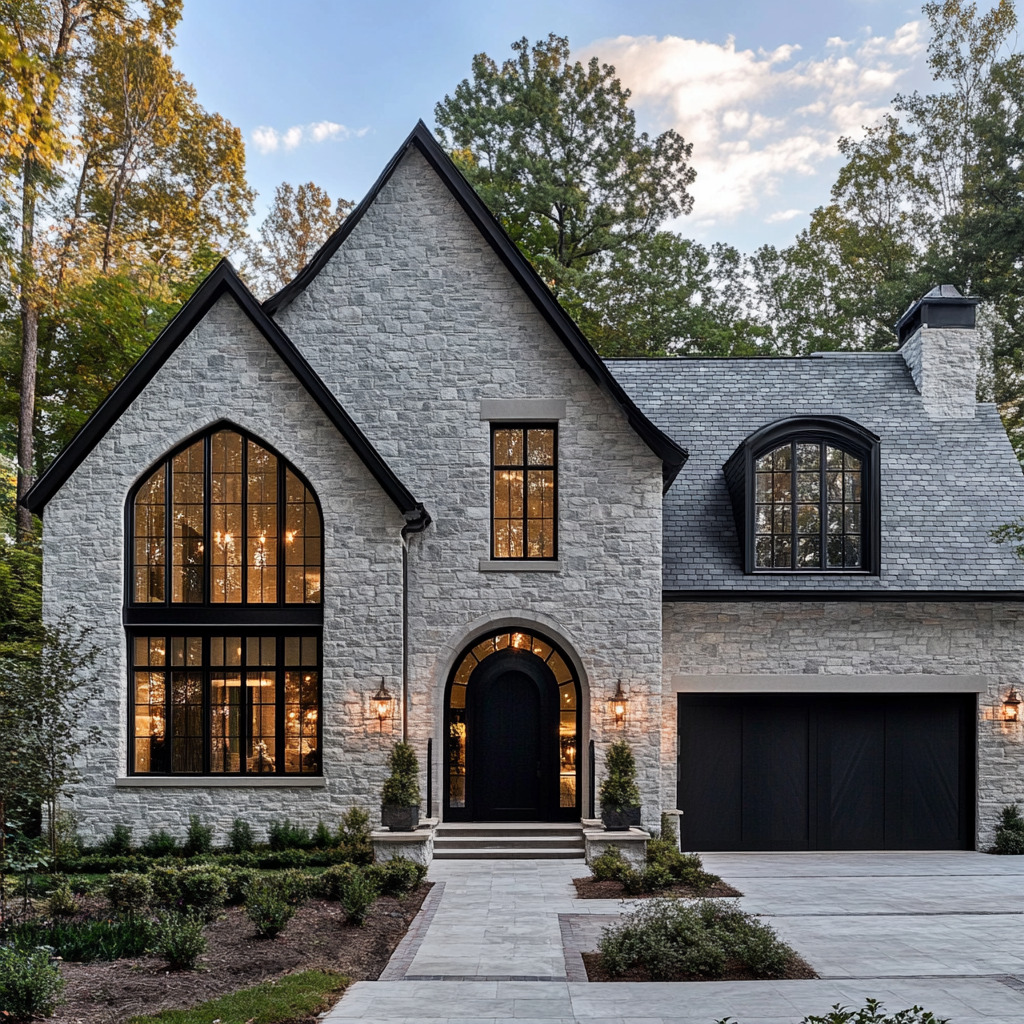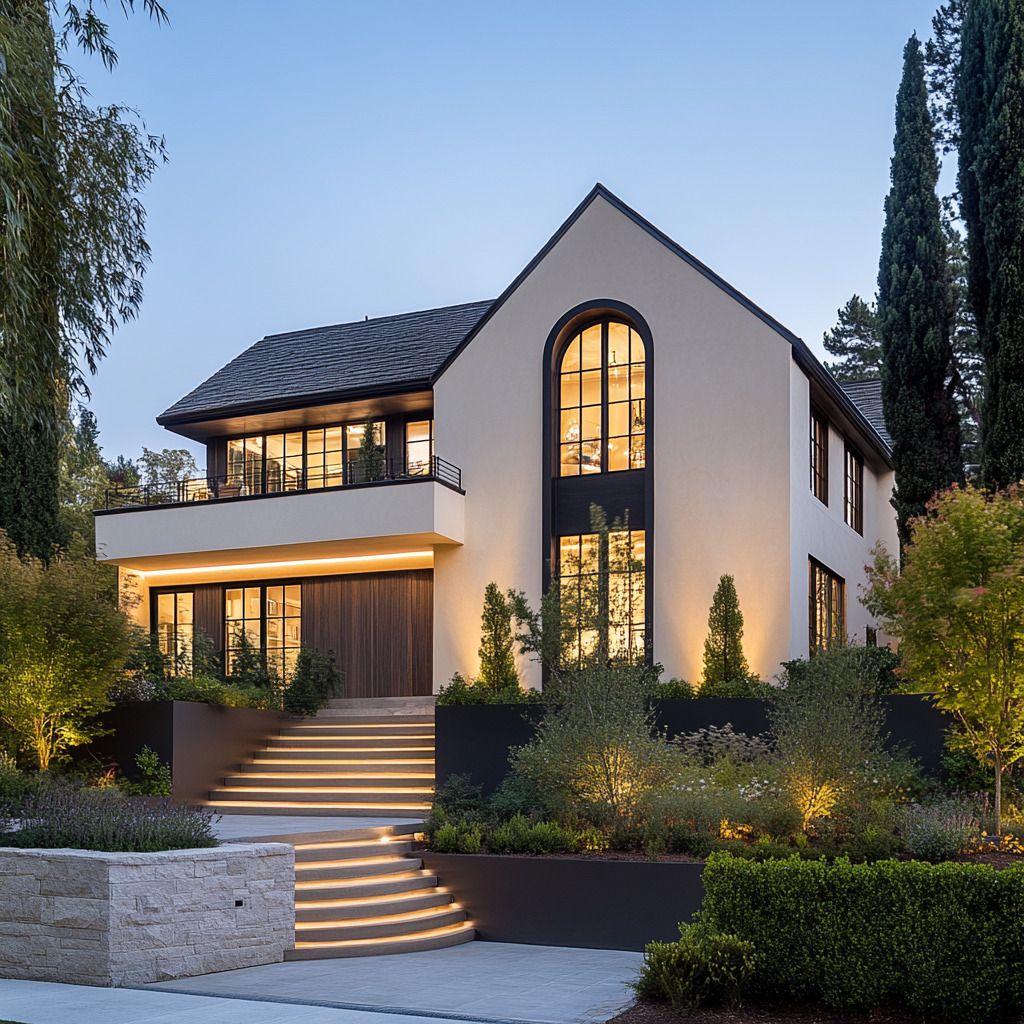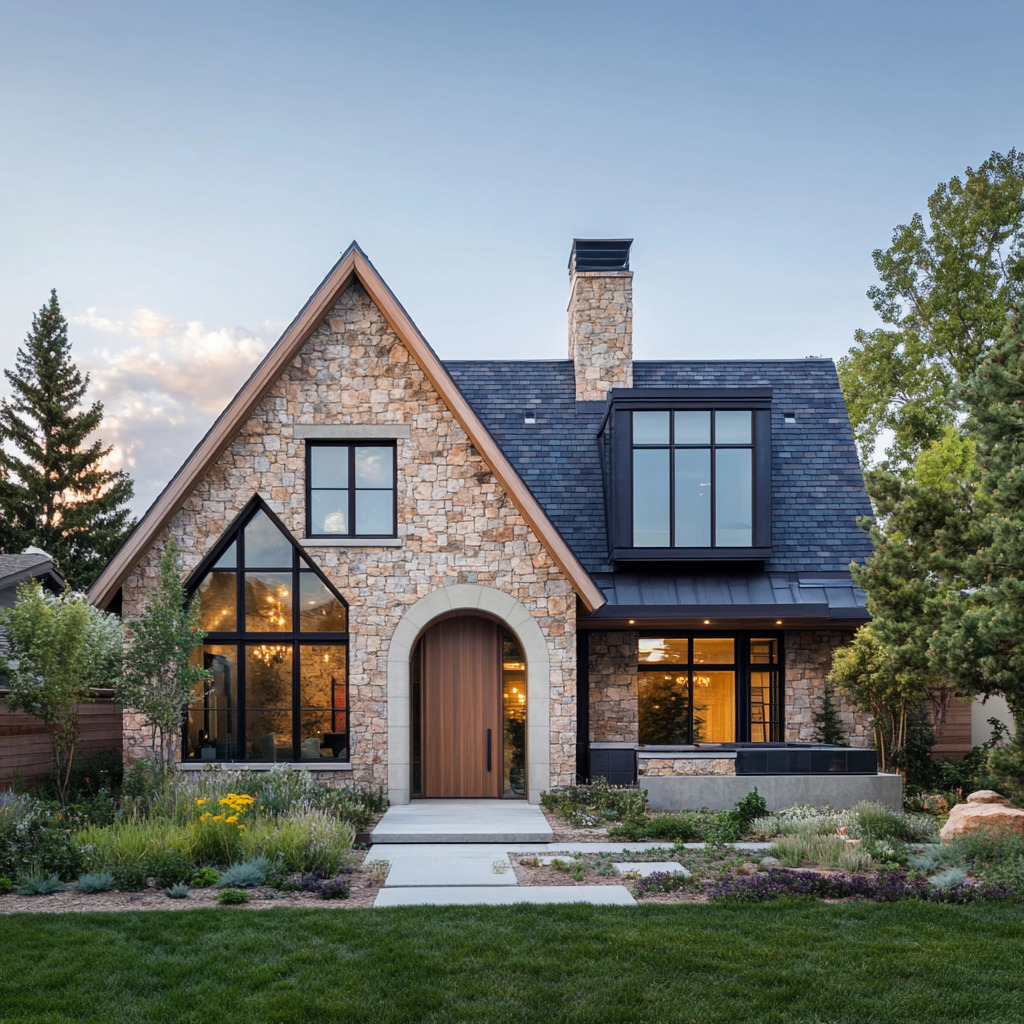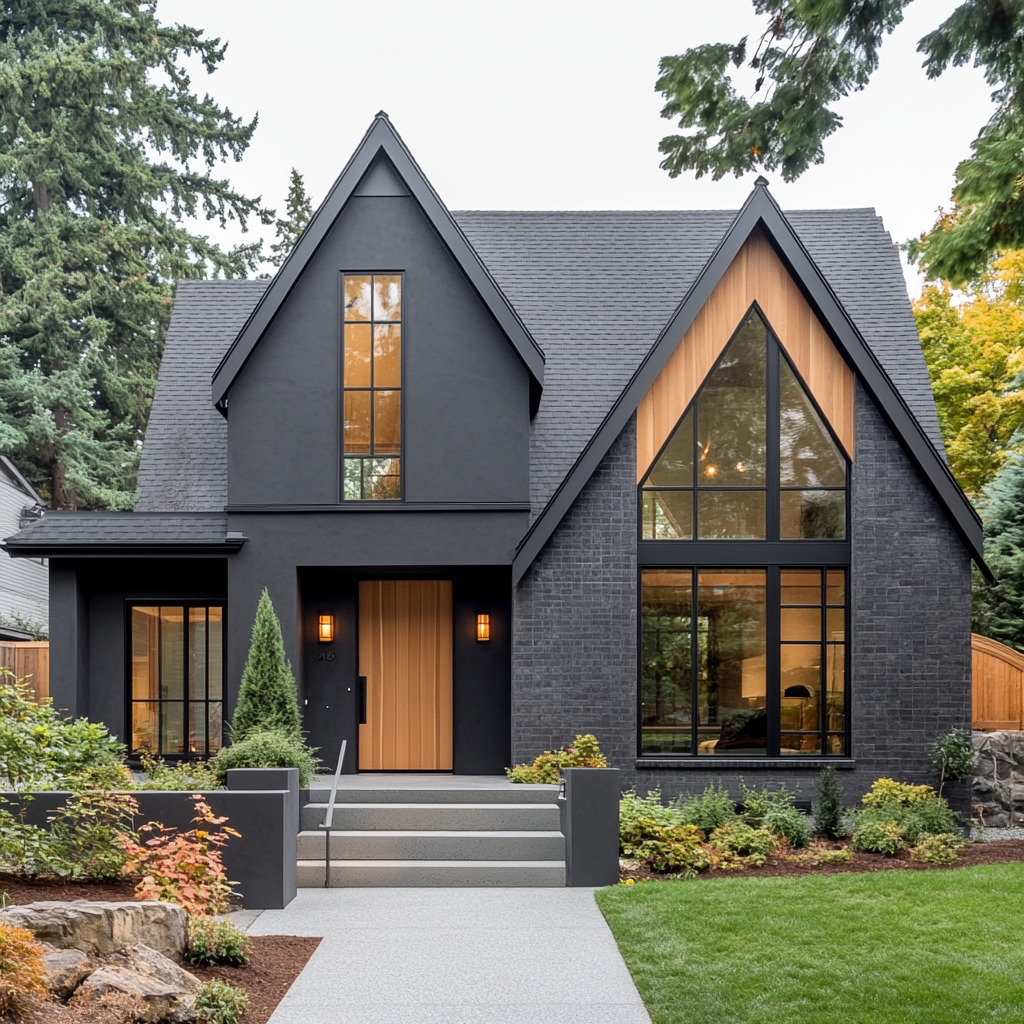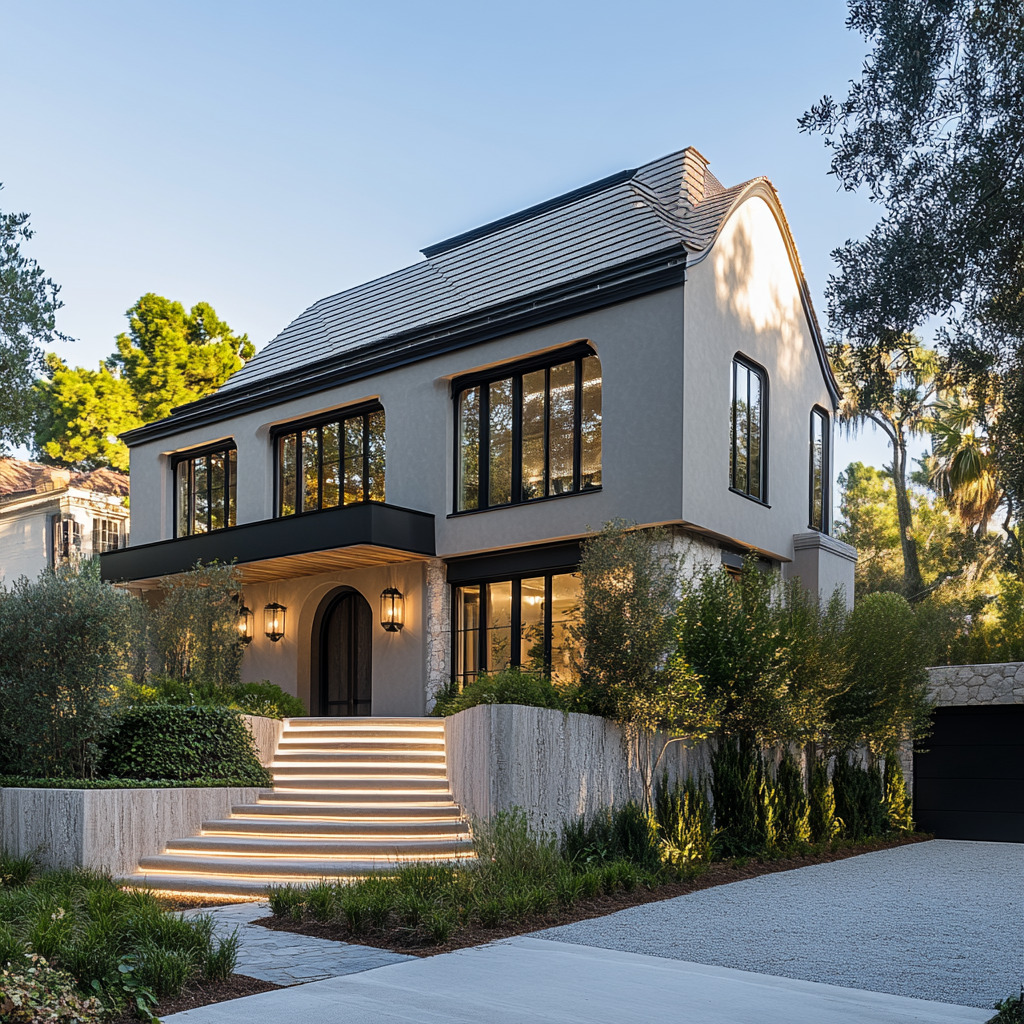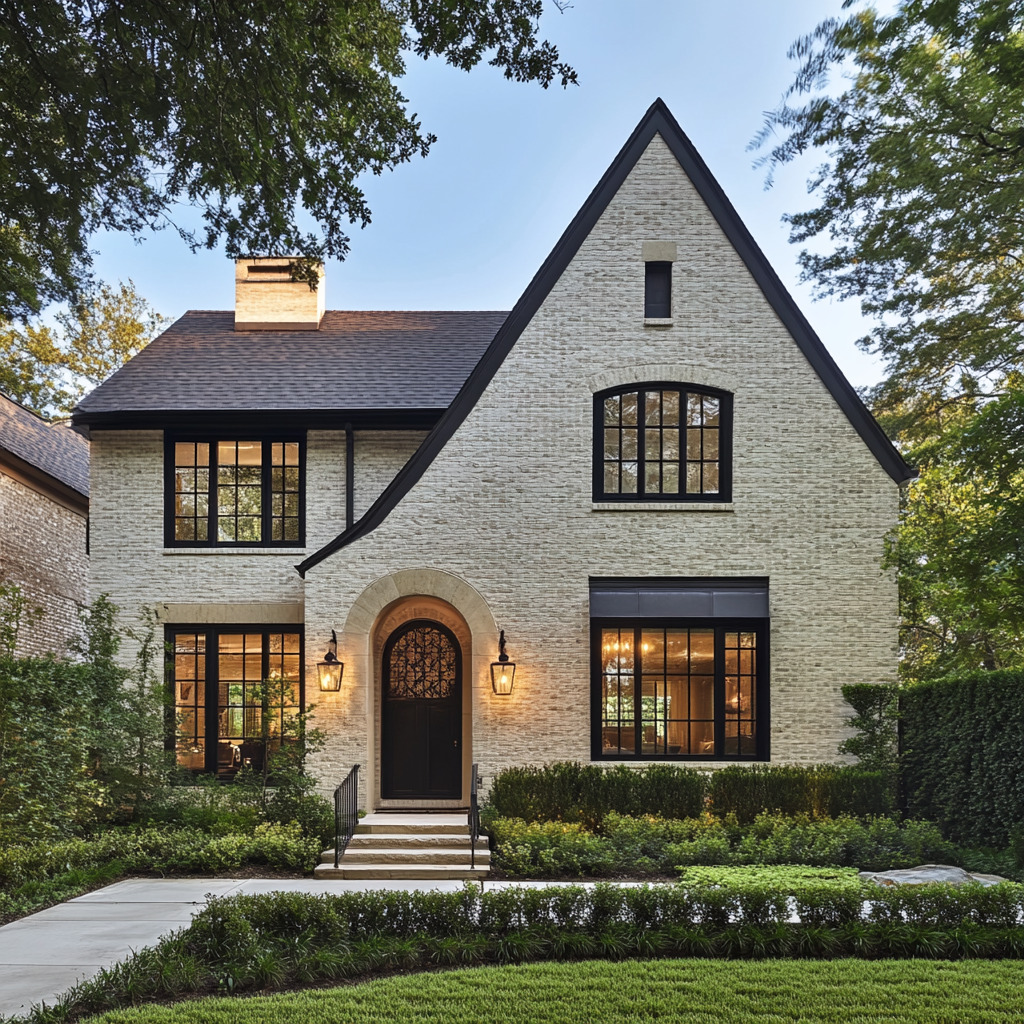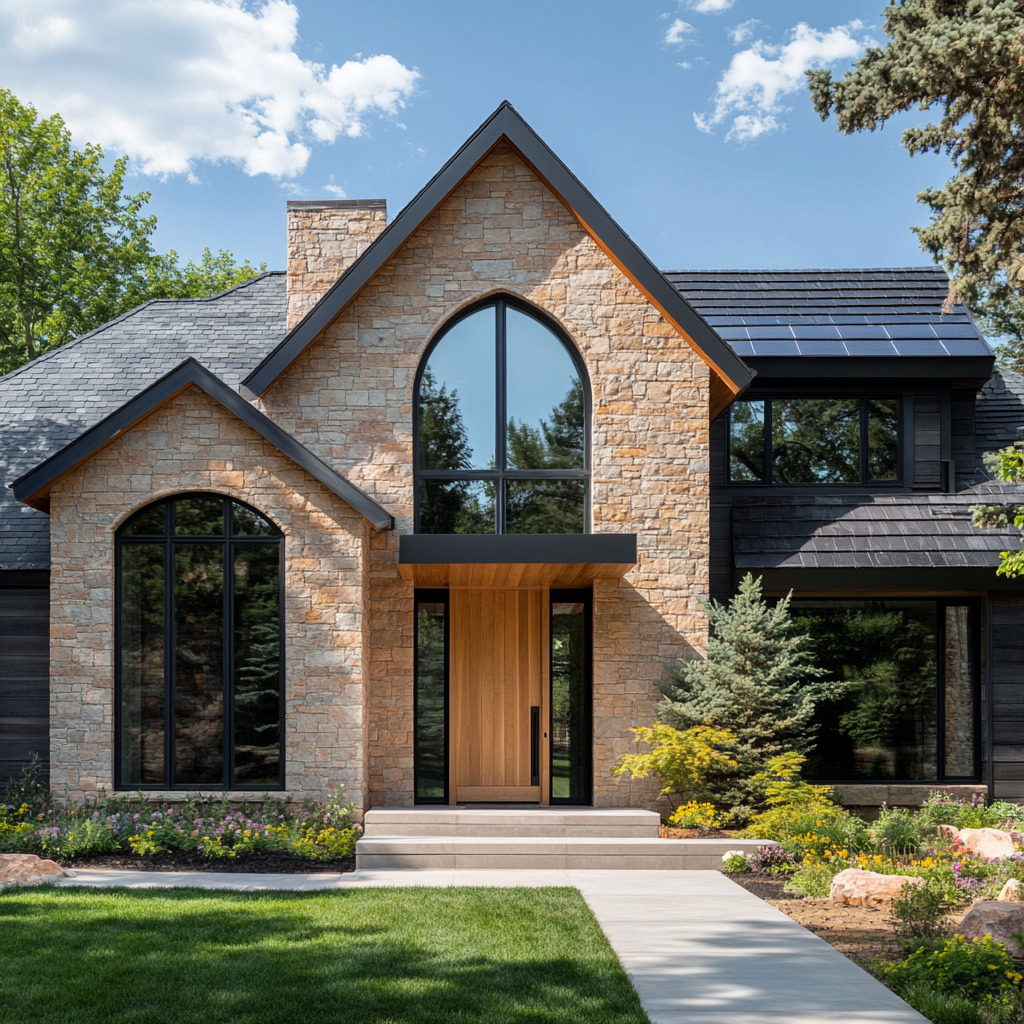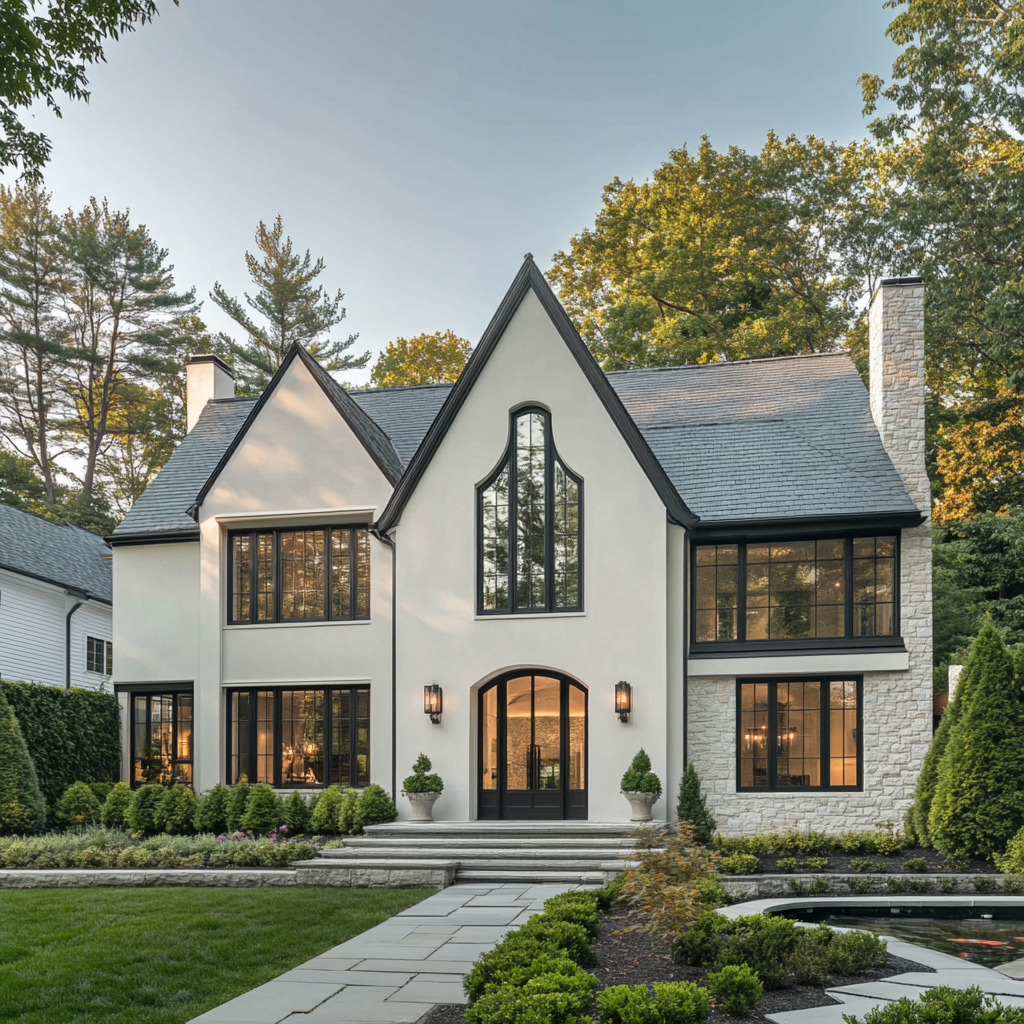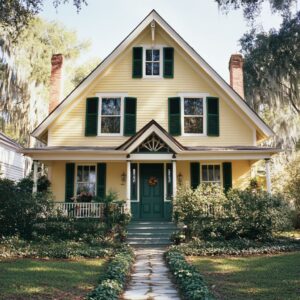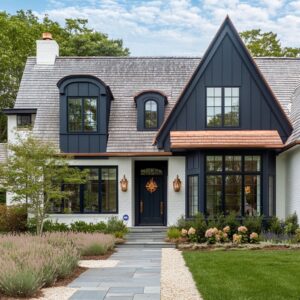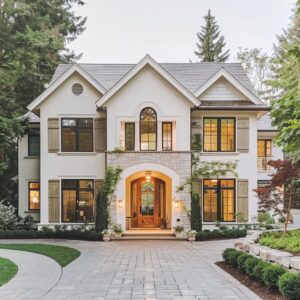Modern Tudor-style homes capture the imagination by harmonizing the timeless appeal of traditional Tudor architecture with the creative ingenuity of contemporary design. This detailed article delves into every facet of this fascinating architectural style, exploring how historical charm is seamlessly blended with modern innovation to create homes that are visually striking and functionally superior.
Through a multi-dimensional analysis, this piece examines key elements such as architectural design principles, the strategic use of materials, and the integration of historical references with modern updates. The unique spatial dynamics and aesthetic philosophies behind these homes are also explored in-depth.
The goal is to uncover specific details that make a contemporary Tudor house both authentic and forward-thinking, offering insights and recommendations for anyone inspired to create their own version of this captivating style.
From the steeply pitched rooflines and intricately detailed chimneys to modernized windows and innovative material combinations, the article highlights the features that give these homes their distinct character. Furthermore, it emphasizes the role of thoughtful landscaping, creative lighting, and sustainable practices in enhancing the overall design.
For homeowners, designers, and enthusiasts alike, this guide not only celebrates the enduring legacy of the Tudor style but also provides actionable ideas to bring modern interpretations to life. Whether you’re seeking to build, renovate, or simply appreciate the beauty of this style, this article offers a wealth of inspiration grounded in both tradition and modern creativity.
Architectural Core: Blending Traditional Tudor Elements with Modern Design
Modern Tudor houses draw from their rich architectural heritage while embracing contemporary updates that enhance their visual appeal, functionality, and sustainability. These homes bridge the gap between old-world charm and modern sensibilities, creating a design language that feels both timeless and relevant.
Let’s take a closer look at the key architectural elements that define this style and explore creative ways to incorporate them into a contemporary Tudor home.
Steeply Pitched Rooflines
The steeply pitched gable is an unmistakable hallmark of the Tudor architecture house, giving these homes their iconic silhouette. This feature is not just a nod to the historical style—it also serves as a structural and aesthetic anchor.
In modern designs, these rooflines are refined with cleaner edges and, in some cases, asymmetry or overlapping tiers to add visual depth and interest. The steep angles create striking shadows and emphasize verticality, lending a sense of drama to the façade.
Creative Idea: Introduce subtle metal accents along the rooflines for a contemporary touch that contrasts beautifully with traditional materials. Hidden lighting tucked beneath the eaves can transform the rooflines into a glowing architectural feature at night.
Experiment with unique gable shapes, such as geometric or elongated designs, to push the boundaries of the traditional Tudor form.
Mixed Materiality
A key feature of Tudor style house design is the interplay of contrasting materials like stone, brick, stucco, and wood. This mix adds depth and texture to the exterior, creating visual variety that feels both traditional and contemporary.
In today’s reinterpretations, designers often combine classic materials with sleek finishes like corten steel or polished concrete to create a fresh, modern aesthetic.
Creative Idea: Use dual-tone façades to balance the weight of textured stone against the smoothness of stucco. Consider accenting the façade with minimalist steel panels or concrete details to create subtle contrasts that feel intentional.
Incorporating reclaimed or locally sourced materials can also enhance the home’s sustainability while giving it a personalized story.
Large Windows
One of the most transformative updates in modern Tudor houses is the replacement of small, leaded glass panes with oversized windows. These large, energy-efficient windows invite natural light into the home, making interiors feel airy and connected to the outdoors.
Black metal frames add bold contrast and emphasize the clean lines of the design while paying homage to the dark timber details of traditional Tudor homes.
Creative Idea: Play with unexpected window shapes to break the monotony of rectangular panes. Trapezoidal, circular, or arched windows can add an artistic flair while maintaining harmony with the overall design.
For privacy, consider using mirrored or lightly tinted glass, which enhances contrast and adds a reflective quality that changes with the light throughout the day.
Exposed Timber Accents
Exposed timber beams are a classic feature of Tudor architecture, traditionally arranged in ornate half-timbering patterns. Modern Tudor designs simplify this detail, using clean, linear timber accents to add contrast and texture to the façade.
These darker beams create a dynamic interplay with lighter stucco or stonework, highlighting the home’s structural framework.
Creative Idea: Opt for asymmetrical timber arrangements or minimalist slats to give the façade a contemporary edge. Stain the wood in bold tones like charcoal gray or natural cedar to add warmth and depth.
For a more dramatic effect, integrate timber elements into window frames or as structural accents on patios and pergolas.
Arched Doorways
The arched doorway, often rounded or pointed, is a signature of Tudor architecture that adds a touch of timeless elegance to the home’s entryway. In modern Tudor houses, these arches are simplified, emphasizing clean lines and minimalistic finishes.
They create a welcoming focal point while retaining the charm of the original design. Creative Idea: Incorporate glass paneling or frosted inserts into the arched door for a fresh take on this classic feature.
Surround the doorway with recessed lighting to highlight its curvature and make the entry feel inviting at night. For added texture, frame the arch with materials like stone or polished metal.
Chimneys
Chimneys are often prominent in Tudor-style homes, featuring decorative brick or stonework that reinforces the verticality of the design. In contemporary Tudor homes, these elements are reimagined with smoother finishes or geometric patterns, making them as much a sculptural element as a functional one.
Creative Idea: Use chimneys as a bold statement by incorporating unexpected materials like metal cladding or using contrasting grout to emphasize masonry patterns. For a modern twist, consider a dual-sided fireplace visible both inside and outside, seamlessly connecting the living space to outdoor areas.
Modern Tudor houses capture the essence of historical design while adapting to contemporary tastes and lifestyles. Through thoughtful updates to iconic features like steeply pitched rooflines, mixed materiality, large windows, exposed timber accents, arched doorways, and chimneys, these homes maintain their timeless appeal while embracing modern innovation.
Whether inspired by the charming homes of English villages or reimagined for urban neighborhoods, the Tudor style offers endless opportunities for creative expression and architectural excellence.
Landscaping: Harmonizing Nature with Design
Landscaping plays a pivotal role in complementing the architecture of a modern English Tudor house style. By merging natural elements with thoughtful design, the outdoor spaces not only enhance the home’s aesthetics but also create functional, inviting environments for relaxation and entertainment.
Through a blend of traditional garden concepts and modern sensibilities, the landscaping becomes a seamless extension of the home.
Cottage-Style Gardens
The cottage-style garden is a cornerstone of Tudor revival style architecture, evoking a sense of nostalgia and charm. Manicured lawns paired with flowering shrubs and soft, winding pathways create a tranquil atmosphere reminiscent of historical Tudor gardens.
This layout strikes a balance between curated design and organic beauty.
Creative Idea: Introduce structured hedges or neatly clipped topiaries to provide a contemporary counterpoint to the softness of traditional planting. Geometric planters in materials like weathered steel or concrete can create visual contrast while aligning with modern aesthetics.
For a sustainable touch, consider planting native species that thrive in the local climate. These plants not only require less maintenance but also contribute to a healthier ecosystem.
Inspiration: To emulate the gardens often seen surrounding an English Tudor mansion, frame pathways with perennials such as lavender or boxwood, creating natural symmetry that leads the eye toward the home. Additionally, installing a small water feature or rock garden can add texture and depth to the overall design.
Outdoor Living Spaces
Modern landscaping for Tudor-style homes extends beyond visual appeal to include functional outdoor living spaces. Patios, pergolas, and terraces expand the usable area of the property while maintaining harmony with the architectural style.
These spaces encourage an indoor-outdoor connection, perfect for hosting gatherings or enjoying quiet moments in nature.
Creative Idea: Use materials such as composite decking or polished concrete to give outdoor areas a clean, modern look. For continuity with the Tudor theme, consider adding subtle Tudor-style arches to pergolas or covered seating areas.
These architectural details nod to tradition while integrating seamlessly with contemporary design.
Practical Tip:
Arrange outdoor furniture to create zones within the space, such as a dining area and a lounging section. Select pieces made from durable materials like teak or powder-coated aluminum to withstand the elements without sacrificing style.
Lighting Enhancement: String lights or softly glowing wall sconces can provide an intimate atmosphere for evening use. Paired with carefully placed seating, these design choices make the space both functional and inviting.
Lighting Design
Thoughtful lighting enhances both the safety and aesthetics of the landscape surrounding a Tudor-style home. Strategic illumination emphasizes architectural elements, draws attention to pathways, and creates a welcoming ambiance after dark.
Creative Idea: Recessed ground lights placed along the base of stone walls or hedges can highlight textures and provide subtle visual guidance. Architectural uplights focused on the home’s chimney, gables, or arches can accentuate the striking features of Tudor revival style architecture.
For pathways, linear LED lighting integrated into steps or along the edges of pavers offers a contemporary, understated effect. Lantern-style sconces near entry points or along garden paths add a traditional touch that aligns with the home’s character.
Landscaping for a modern English Tudor house style marries the past with the present, drawing on historical garden design while incorporating innovative, sustainable features. From lush cottage-style gardens to functional outdoor living spaces, every detail contributes to an environment that enhances the home’s character.
Whether inspired by an English Tudor mansion or a more understated Tudor revival style home, the landscaping serves as an essential element in crafting a cohesive, timeless design.
Design Principles That Create Visual Impact
Modern Tudor architecture stands out by blending classical design elements with inventive approaches that enhance its visual and functional appeal. By reinterpreting traditional design rules and integrating contemporary aesthetics, modern Tudors achieve a harmonious balance that captivates the eye while offering comfort and practicality.
This section explores the key design principles that make these homes so impactful.
Proportion and Symmetry
One of the defining features of Tudor architecture is its commitment to proportion. Classical Tudors often emphasized symmetry to create balance and formality.
Modern iterations, however, introduce subtle asymmetry, adding depth and visual interest without sacrificing harmony.
Creative Idea: Consider pairing symmetrical roof gables with slightly offset entryways or windows. This balanced asymmetry creates an intriguing tension that draws the eye and invites exploration.
For example, a centered stone chimney flanked by windows of varying sizes can create a focal point while maintaining an overall sense of proportion. Application Example: In a modern Tudor exterior, combining symmetrical elements like matching dormers with asymmetrical landscaping, such as a staggered row of shrubs or a curved garden path, can enhance the interplay between order and organic flow.
Contrast and Texture
Visual contrast is a hallmark of Tudor homes, with light stucco or stone facades juxtaposed against dark wood or metal accents. The interplay of contrasting materials not only highlights architectural features but also adds a dynamic quality to the overall design.
Creative Idea: Go beyond the standard material pairings by introducing unexpected textures like fluted metal panels, rough-cut limestone, or reclaimed wood. These materials add layers of depth and invite tactile engagement.
For example, a modern Tudor might feature a smooth stucco facade interrupted by vertical timber accents stained in deep charcoal or a rich espresso finish.
Modern Touch: A contemporary twist involves using sleek brushed metal for window frames or roof trims. This adds a clean, industrial edge while maintaining the traditional material palette.
Dark window casings set against light-colored exteriors further emphasize the strong lines of the design. Key Insight: A thoughtfully designed facade for an English Tudor style mansion can include dual-textured stone to create subtle gradations of light and shadow, offering a more nuanced and sophisticated visual effect.
Lighting Integration
Lighting is more than a functional necessity—it is an integral design element that can transform the way a home looks and feels, particularly during evening hours. The strategic use of lighting accentuates architectural features, highlights textures, and creates mood-enhancing ambiance.
Creative Idea: Integrate programmable smart lighting to control intensity and warmth throughout the day. For instance, use uplights at the base of the gables to emphasize their steep pitch and striking angles.
In contrast, recessed soffit lighting can softly illuminate the perimeter, giving the home a grounded, inviting glow at night.
Exterior Enhancement: For a modern Tudor exterior, consider placing linear LED lights along the edges of pathways or driveways, guiding visitors toward the entry while subtly accentuating landscaping. Lantern-style sconces positioned by doorways can pay homage to the traditional Tudor aesthetic while tying into the home’s overall lighting scheme.
Layering Light: Combine multiple light sources to create depth. Architectural uplights can focus on stone chimneys or arched doorways, while soft patio lighting ensures functionality in outdoor living spaces.
Inside, wall-mounted fixtures with adjustable dimming capabilities can highlight the timber beams of vaulted ceilings, blending interior and exterior design elements seamlessly.
By thoughtfully applying principles of proportion, contrast, texture, and lighting, modern Tudor homes offer a timeless yet forward-thinking design. The marriage of classic Tudor characteristics with inventive, contemporary ideas allows for unique interpretations that stand out in any setting.
Whether creating a compact home or an expansive English Tudor style mansion, these design principles provide endless opportunities for creativity and impact. With attention to detail and a willingness to explore new materials and layouts, designers can craft homes that honor tradition while embracing the possibilities of the present.
Material Innovations for Modern Tudor Homes
One of the most captivating aspects of modern Tudor house design lies in its innovative use of materials. While rooted in tradition, these homes embrace a fresh perspective by incorporating sustainable and contemporary materials.
The thoughtful integration of old and new elements ensures these homes remain both visually compelling and environmentally responsible. Here’s an in-depth exploration of material choices and creative strategies that define modern Tudor homes.
Sustainable Materials: Tradition Meets Eco-Consciousness
Modern Tudor homes take cues from their historical predecessors, but with an emphasis on environmental stewardship. By using materials that reduce the environmental footprint, these homes embody sustainability without compromising on aesthetic appeal.
Reclaimed Wood: The use of reclaimed wood breathes new life into old timber, adding character and warmth to the facade or interior beams. Unlike newly milled wood, reclaimed materials often feature unique grain patterns, aged textures, and a story of their own.
For instance, reclaimed oak can be stained in dark tones to contrast with light stucco walls, creating a striking exterior that is both timeless and environmentally friendly.
Eco-Friendly Stucco: Stucco remains a cornerstone of Tudor architecture, but modern formulations now include sustainable ingredients such as lime or clay. These options reduce the carbon footprint while offering improved breathability and durability.
This type of stucco pairs beautifully with both smooth and textured finishes, depending on the desired aesthetic.
Solar-Reflective Shingles: While slate and asphalt shingles are synonymous with Tudor-style roofs, modern updates include solar-reflective materials that enhance energy efficiency. These shingles reduce heat absorption, keeping interiors cooler and lowering energy consumption.
The aesthetic remains cohesive, as solar-reflective shingles are available in natural tones like slate gray and weathered brown, blending seamlessly with Tudor design principles.
Creative Tip: Pair sustainable materials with native landscaping to extend the eco-conscious theme beyond the home’s walls. For example, a manicured lawn can give way to drought-tolerant plants and permeable stone pathways, reducing water usage while enhancing the overall visual harmony.
Mixed Mediums: Bold Contrasts and Unexpected Combinations
The interplay of traditional and contemporary materials is a defining characteristic of modern Tudor homes. By introducing unexpected elements, designers achieve a sense of originality while preserving the architectural integrity of the Tudor style.
Traditional Stone Meets Modern Accents: Classic stone exteriors gain a modern twist when paired with innovative materials. For example, natural stone walls can be accented with corten steel panels, creating a vivid contrast that highlights both textures.
The oxidized patina of corten steel provides a rich, earthy tone that complements the muted hues of stonework.
Weathered Copper Details: Weathered copper introduces a sense of understated luxury to a Tudor home. Whether used as trim on rooflines or as cladding for chimneys, the material develops a natural patina over time, shifting from its original metallic sheen to greenish hues.
This evolving aesthetic makes copper a dynamic addition to the exterior palette.
Charred Wood (Shou Sugi Ban): Originating from Japan, this technique involves charring wood to create a durable, fire-resistant material with a distinct blackened finish. When applied to Tudor-style homes, shou sugi ban adds a modern yet organic quality that contrasts beautifully with pale stucco or stone facades.
Its deep, textured surface offers an intriguing visual and tactile experience.
Creative Tip: Consider using mixed mediums on a white modern Tudor house to emphasize contrast. For example, pair pristine white stucco with charred wood accents and black metal-framed windows.
This approach creates a clean yet dramatic aesthetic that bridges classic and contemporary influences.
Blending Functionality with Style
Material innovations in modern Tudor homes aren’t just about appearances—they also enhance functionality and longevity. Thoughtful material selection ensures these homes are equipped to meet the needs of modern living while retaining their distinctive charm.
Low-Maintenance Exteriors: Modern materials like composite siding and treated stone offer durability with minimal upkeep. These options are especially useful in regions with harsh weather conditions, where traditional materials may require frequent repairs or refinishing.
Smart Material Integration: Combining traditional craftsmanship with modern technology can result in high-performing materials that elevate both aesthetic and functional aspects. For example, integrating insulated steel panels into the facade can improve energy efficiency while mimicking the texture of traditional timber.
Creative Tip: To ensure coherence, use materials with complementary tones and textures. For example, a Tudor-inspired home with smooth stucco walls might feature timber accents stained to match the hue of the roof shingles.
This attention to detail creates a seamless and polished appearance.
Reviving Tradition with a Modern Lens
Modern Tudor homes celebrate the architectural legacy of their predecessors while embracing the possibilities of contemporary material innovation. By rethinking material choices, designers create spaces that are visually compelling, environmentally responsible, and built to last.
Whether it’s incorporating sustainable features like solar-reflective shingles or juxtaposing traditional stone with modern corten steel, the material palette plays a critical role in defining the identity of a Tudor home. The beauty of modern Tudor house design lies in its ability to respect tradition while confidently stepping into the future.
Through the creative use of materials, these homes stand as timeless symbols of style and innovation.
Contemporary Elements to Enhance Modern Tudor Homes
While the traditional Tudor aesthetic continues to inspire timeless charm, the introduction of contemporary elements allows these homes to embrace modern living without losing their classic appeal. These thoughtful updates not only enhance the Tudor house exterior but also integrate innovative features that cater to both aesthetics and functionality.
By incorporating custom windows, integrated technology, and fresh color schemes, modern Tudor homes create an engaging blend of history and forward-thinking design.
Custom Window Shapes: Breaking the Mold
Windows are a defining feature of modern Tudor homes, and contemporary interpretations go beyond traditional designs. Experimenting with custom geometries introduces a sense of individuality while maintaining the verticality and balance associated with Tudor architecture.
Unconventional Geometries: Shapes like hexagonal, elliptical, or trapezoidal windows add an artistic element to the facade. For instance, an elliptical window placed above a pointed arch doorway creates a dynamic visual relationship that echoes the historical emphasis on symmetry while introducing contemporary creativity.
Layered Window Styles: Modern Tudor homes often incorporate a mix of window sizes and styles to add depth. Large, black-framed windows dominate the lower levels, offering expansive views and abundant natural light, while smaller, uniquely shaped windows punctuate the upper floors, contributing to the home’s character.
Creative Tip: Consider framing custom-shaped windows with materials that contrast the surrounding facade, such as polished steel or deep-stained timber. This contrast draws attention to the window as an architectural feature while blending with the overall design language of the home.
Integrated Technology: Seamlessly Blending Innovation
The incorporation of smart home technology has become an integral part of modern Tudor design, enhancing convenience and functionality without overshadowing the traditional aesthetic. By embedding technology into the home’s features, modern Tudors achieve a harmonious blend of history and innovation.
Automated Window Coverings: Custom blinds and shades that can be operated via smartphone apps or voice commands offer the perfect blend of practicality and style. They can be programmed to adjust based on the time of day, maximizing energy efficiency and privacy.
Lighting Control Systems: Smart lighting allows homeowners to control the intensity and color of indoor and outdoor lighting to suit various moods and occasions. Recessed lighting along walkways or sconces flanking the doorway can be adjusted to enhance the Tudor exterior’s nighttime charm.
Smart Security Features: Cameras and sensors integrated into the home’s entryway design can be concealed within decorative elements, such as lantern-style light fixtures or stone facades. This ensures modern functionality is unobtrusive and aligned with the home’s aesthetic.
Creative Tip: For the ultimate modern touch, integrate solar panels designed to mimic traditional roofing materials. This not only adds eco-friendly functionality but also maintains the classic roofline synonymous with Tudor architecture.
Color Schemes: Refreshing the Palette
One of the most impactful ways to reinterpret the Tudor aesthetic is through innovative color choices. While traditional homes often feature dark, moody tones, modern Tudors embrace lighter, fresher palettes to create a more open and inviting feel.
Light and Neutral Tones: Whitewashed brick paired with soft gray stucco or sage green accents brings a contemporary twist to the exterior. These tones brighten the facade, making the home feel more expansive while retaining the textured, layered appearance characteristic of Tudors.
Contrasting Trim: Dark trim, such as black or charcoal, against lighter stucco creates a striking visual contrast. This technique highlights architectural features, such as gables, windows, and doorways, while maintaining the structure’s Tudor essence.
Earthy Accents: Incorporating warm, natural hues like terracotta or sandstone into the roofing or masonry details adds a touch of warmth to the design. This works particularly well in regions with abundant greenery, where these tones echo the surrounding landscape.
Creative Tip: Use painted shutters or doors in bold colors—such as deep blue or forest green—to introduce personality without detracting from the classic Tudor style. The key is to choose hues that complement the surrounding materials while adding a subtle pop of interest.
Achieving Visual Harmony Through Modern Updates
The beauty of modern Tudor homes lies in their ability to balance the past with the present. By thoughtfully incorporating contemporary elements, these homes maintain their iconic charm while adapting to modern lifestyles.
Custom window shapes, integrated technology, and innovative color schemes are just a few of the strategies that bring a fresh perspective to these architectural masterpieces.
Whether it’s the clean lines of a trapezoidal window, the convenience of smart home features, or the brightness of a refreshed color palette, these contemporary updates allow Tudor homes to stand out while respecting their historical roots. With these design principles, the Tudor house exterior becomes a canvas for creativity, merging tradition and innovation in an entirely unique way.
Conclusion: A Holistic Approach to Modern Tudor Design
The enduring charm of the modern Tudor style house lies in its ability to bridge the gap between history and modernity. By embracing the elegance of traditional Tudor architecture while incorporating innovative materials and techniques, homeowners can create spaces that are as functional as they are captivating.
This balanced approach highlights the timelessness of the Tudor aesthetic while ensuring it remains relevant to contemporary living.
Timeless Features Reimagined
The essence of the Tudor style is rooted in its distinct architectural elements, and modern interpretations honor these details while rethinking their execution. Steeply pitched rooflines, once designed for practicality in harsh weather, now serve as dramatic focal points.
By introducing cleaner edges, unexpected asymmetry, or layered gables, designers breathe new life into these iconic silhouettes.
Windows, another hallmark of the style, have undergone a remarkable transformation. Replacing traditional small panes with oversized, black-framed designs not only invites abundant natural light but also redefines the facade’s rhythm.
Similarly, chimneys, which historically symbolized warmth and home, are now sculptural elements that marry form and function. These updates show how time-honored features can be reinterpreted to meet modern needs while maintaining their aesthetic significance.
Innovative Materials for Longevity and Impact
Material selection is at the heart of blending historical and modern influences. The integration of reclaimed wood, eco-friendly stucco, and solar-reflective shingles reflects the increasing demand for sustainability.
These materials are not only practical but also add depth and texture to the overall design. Additionally, mixing traditional stone or brick with modern materials like corten steel or shou sugi ban charred wood creates striking contrasts that draw attention without overwhelming the structure’s historical roots.
The strategic use of color also plays a significant role in the design process. While traditional Tudors often relied on dark and muted tones, lighter palettes such as whitewashed brick or sage green stucco add freshness and vibrancy.
This shift in color preference makes the home feel more approachable and harmonizes beautifully with contemporary landscaping.
Lighting and Landscaping as Enhancers
The impact of thoughtful lighting design on modern Tudor homes cannot be overstated. Exterior uplights, recessed ground lights, and strategically placed sconces highlight architectural details and create a welcoming ambiance after dark.
These lighting solutions not only enhance safety but also accentuate the verticality and craftsmanship inherent in Tudor-style homes.
Landscaping ties the entire design together, extending the home’s aesthetic into its surroundings. The balance of manicured lawns, cottage-style gardens, and geometric planters provides a nod to the style’s historical roots while introducing a clean, modern edge.
Patios, pergolas, and outdoor living spaces further demonstrate how this architectural style adapts to contemporary lifestyles, blending beauty and practicality seamlessly.
A Thoughtful Synthesis of Old and New
The appeal of the modern Tudor lies in its adaptability. By taking classical design principles and reinterpreting them with modern sensibilities, this style resonates with both traditionalists and those who seek innovation.
Whether it’s the precision of proportion, the richness of texture, or the understated drama of a well-lit facade, the modern Tudor is a reflection of careful thought and creative vision.
This guide provides a roadmap for designing or appreciating homes in this style, ensuring that every aspect—from the roofline to the garden—contributes to a cohesive, impactful result. For those inspired by history yet drawn to modern innovation, the modern Tudor style offers the perfect blend of past and present, making every home a story of timeless beauty and forward-thinking design.
